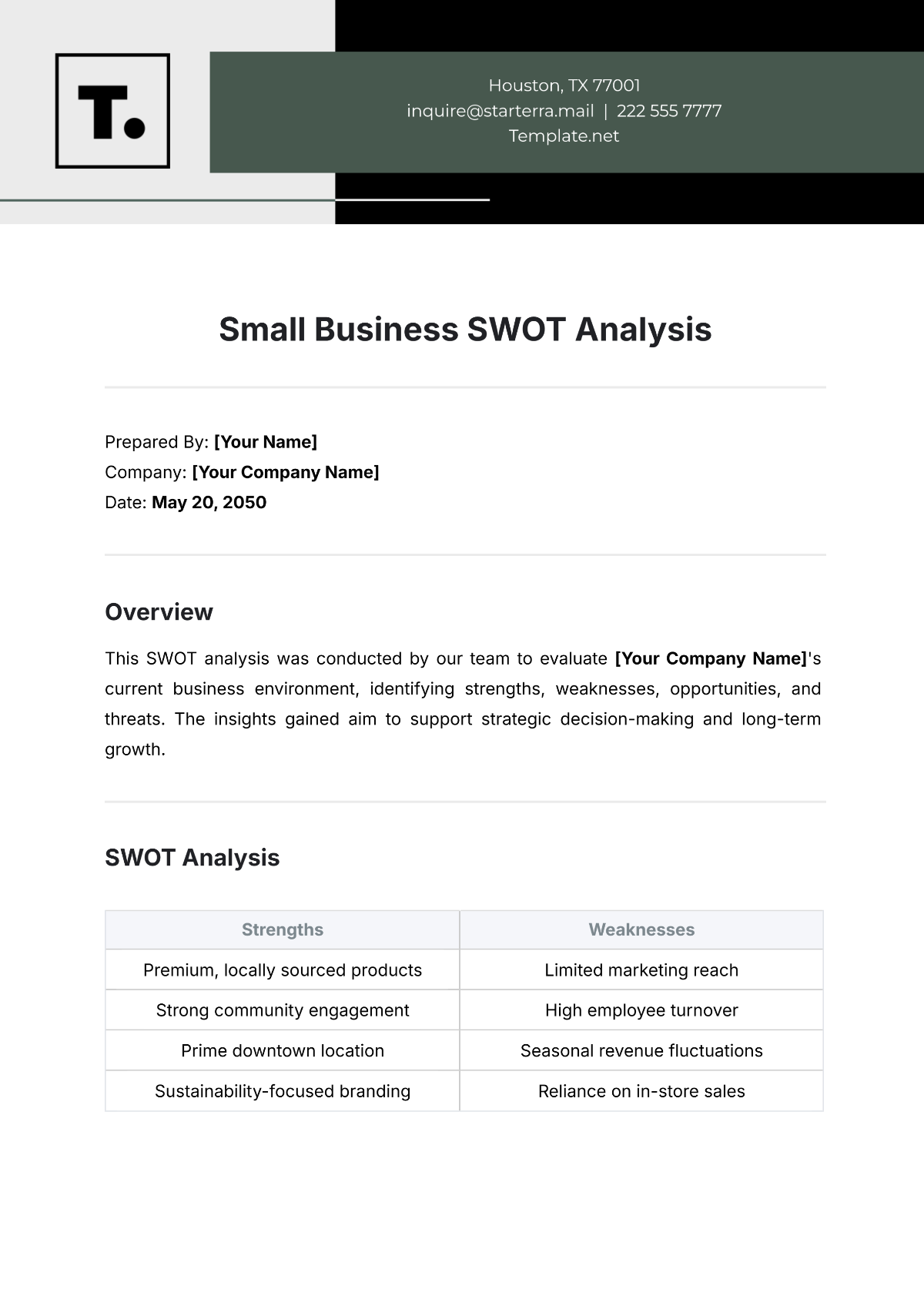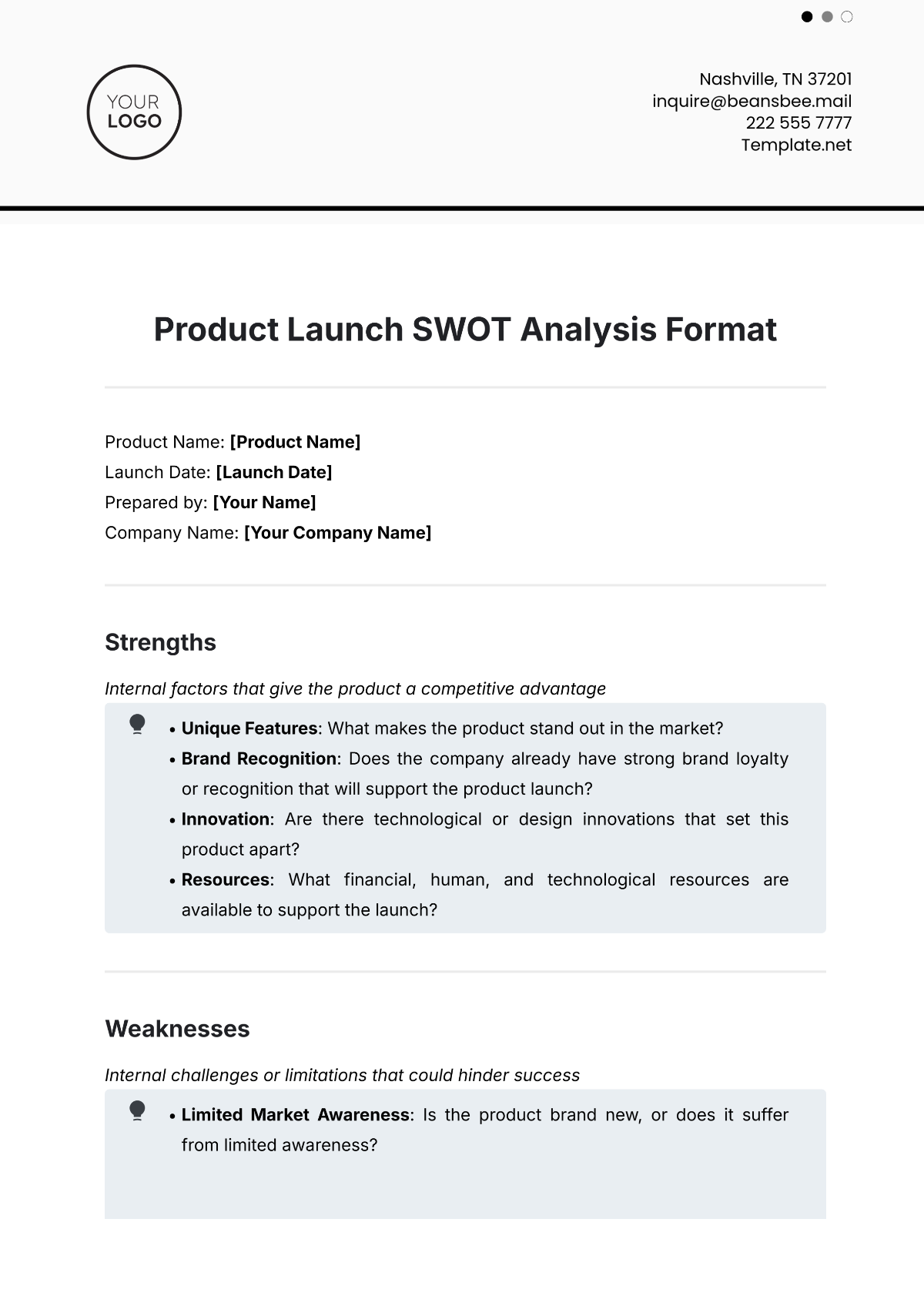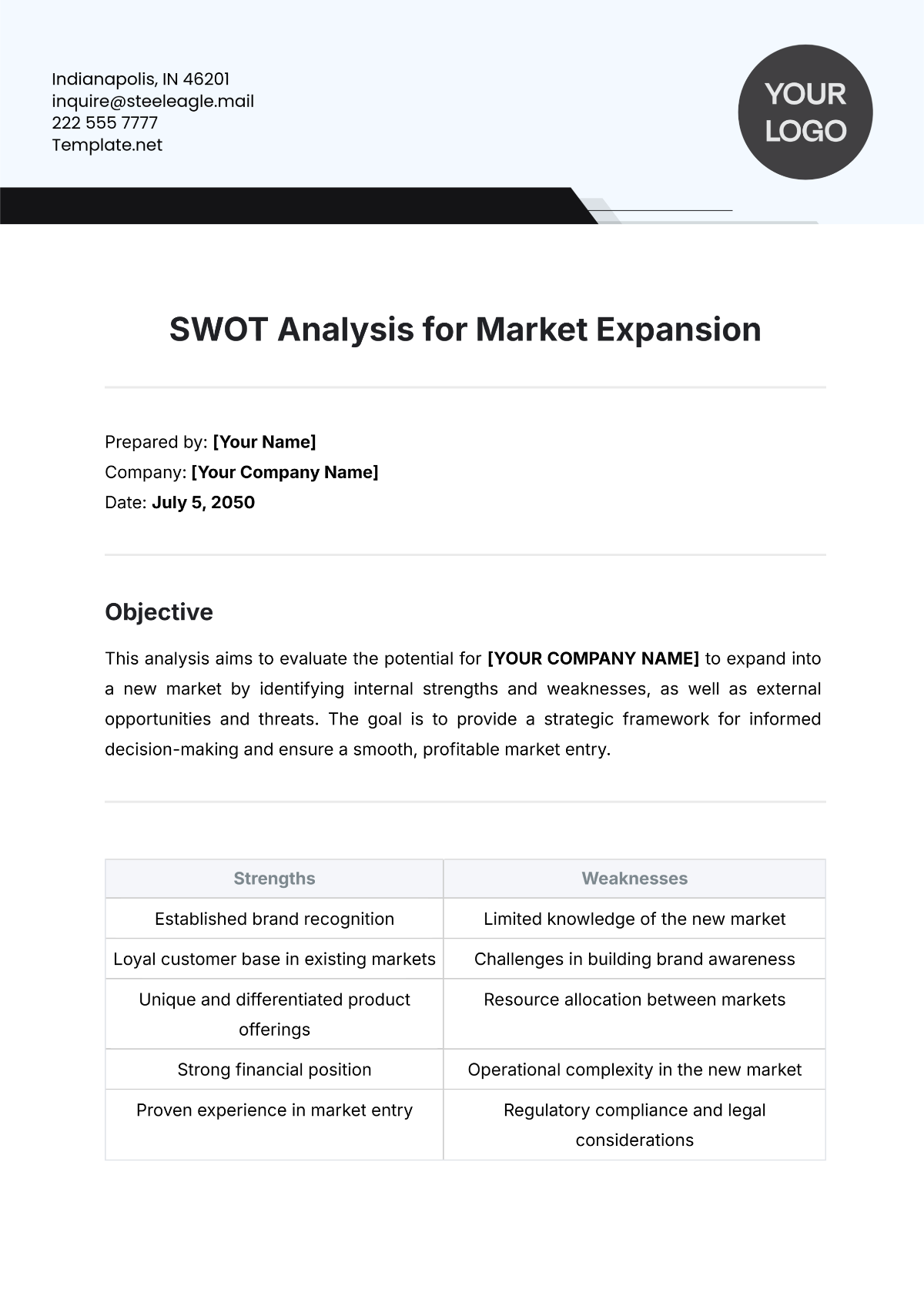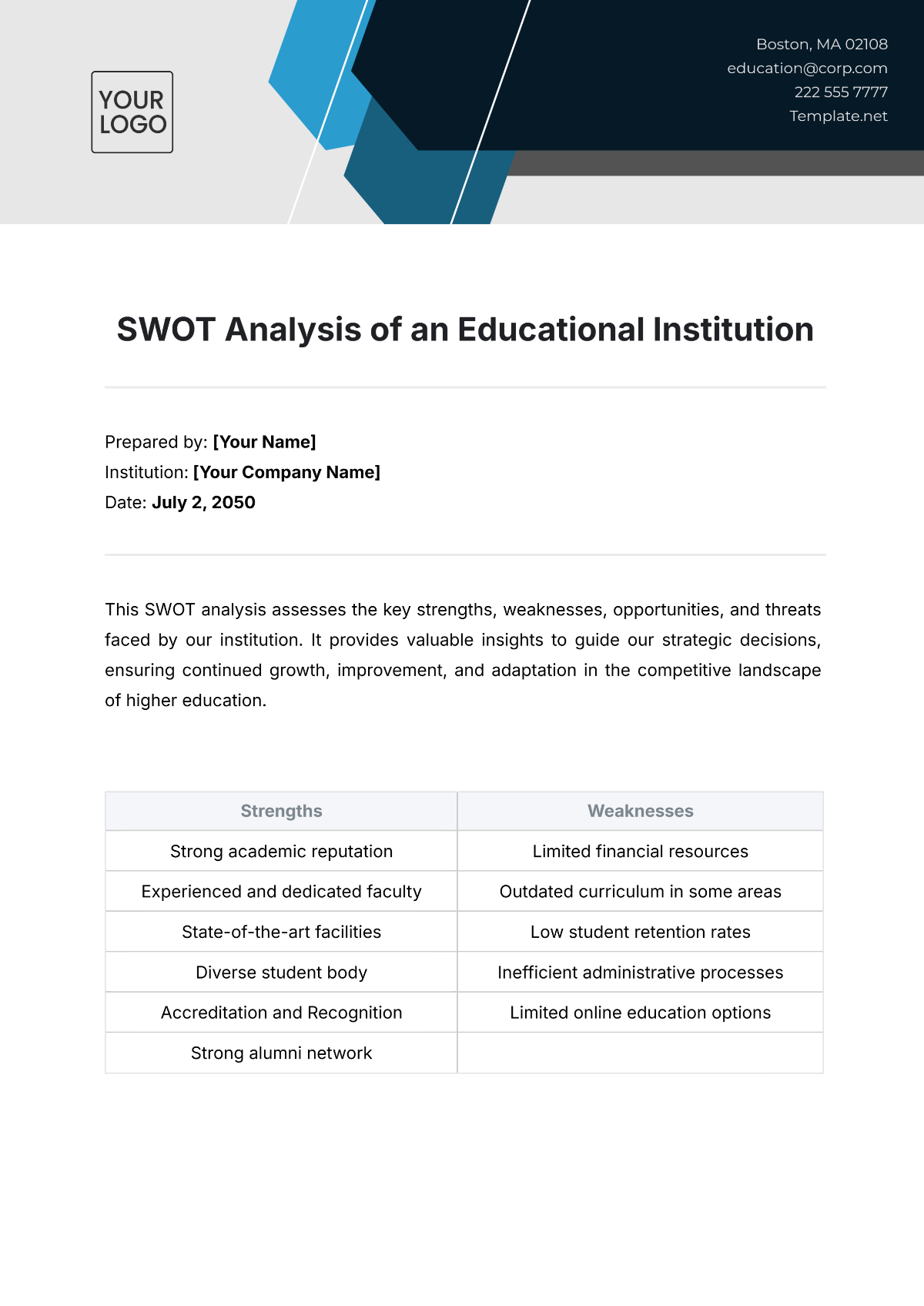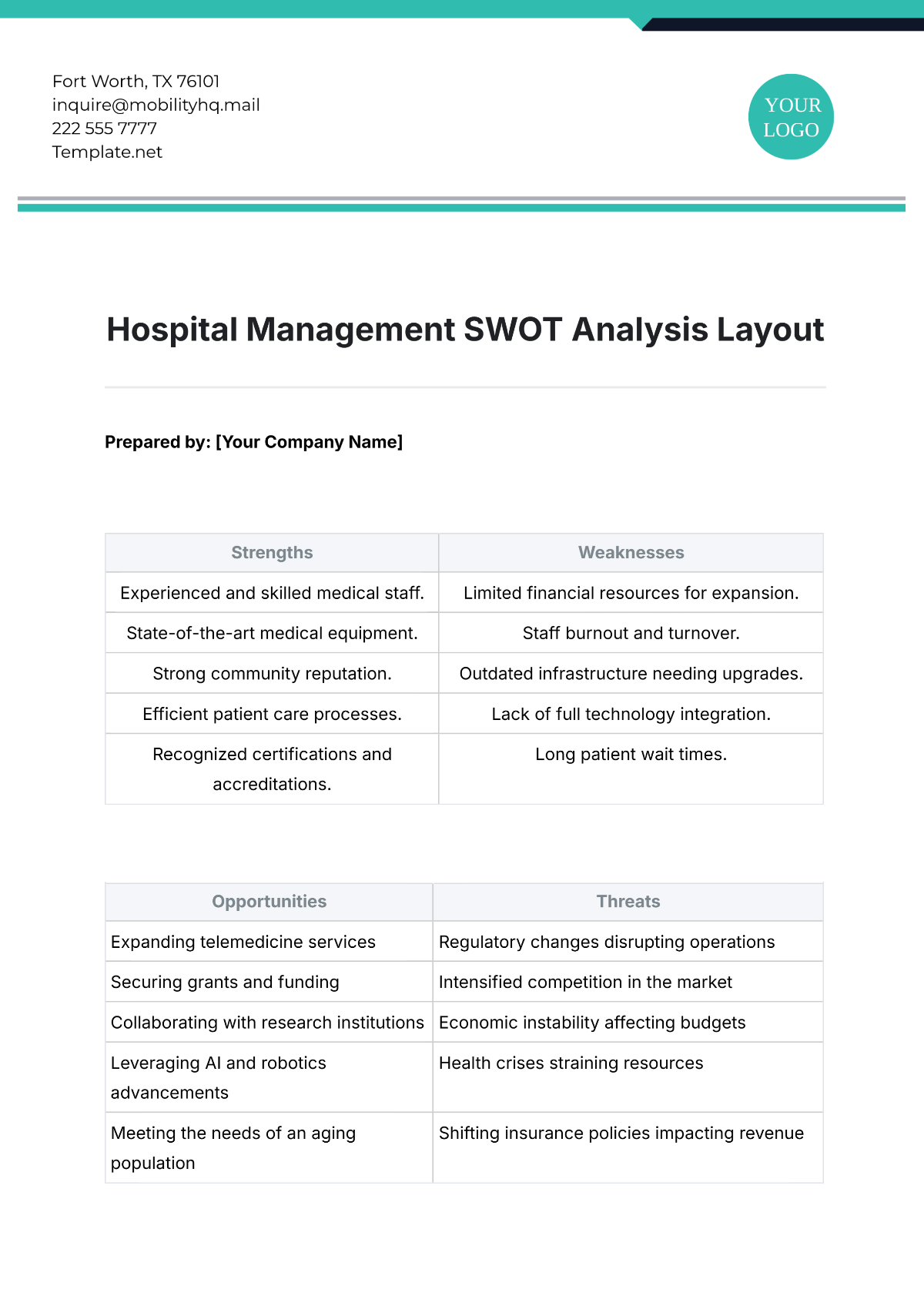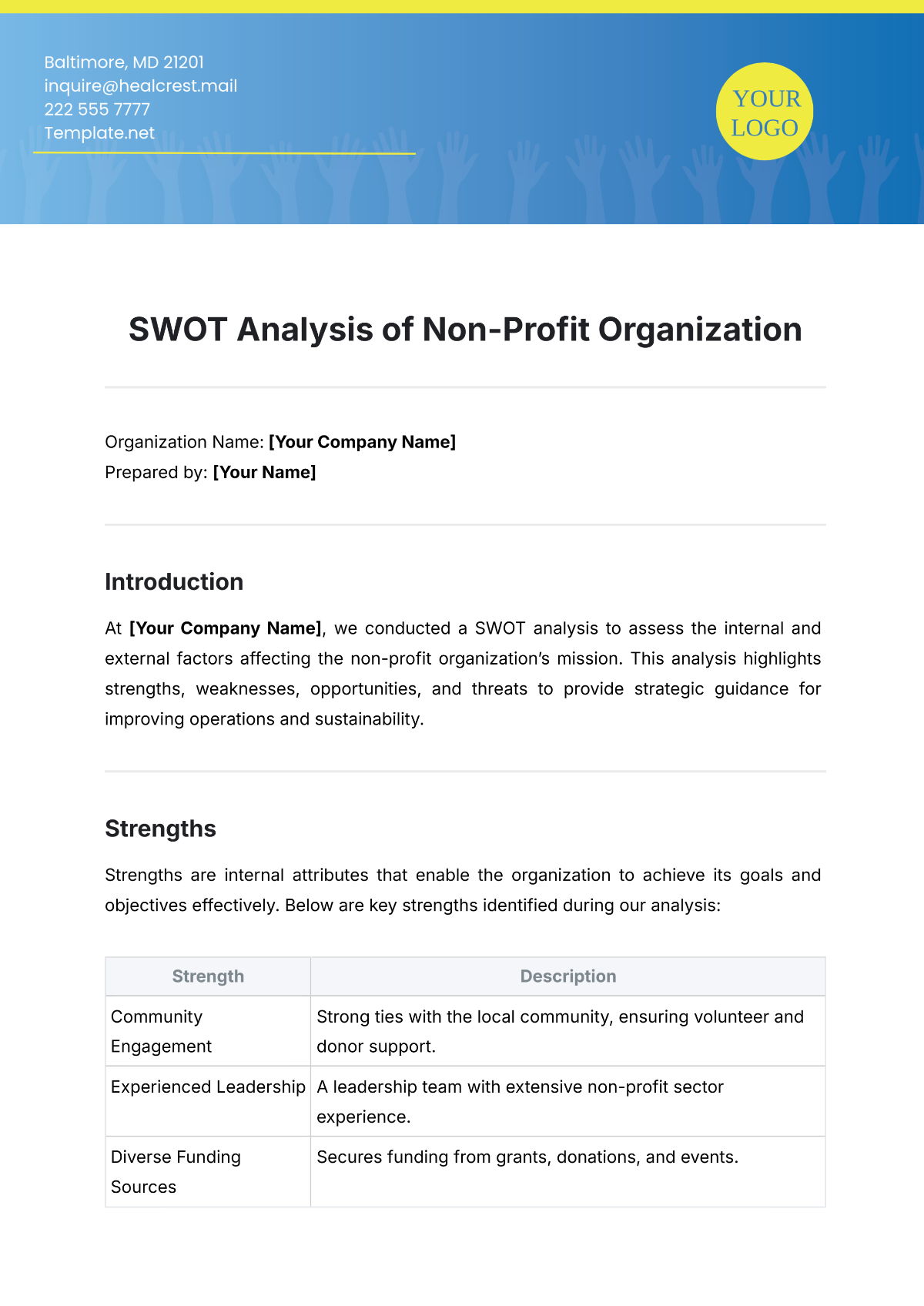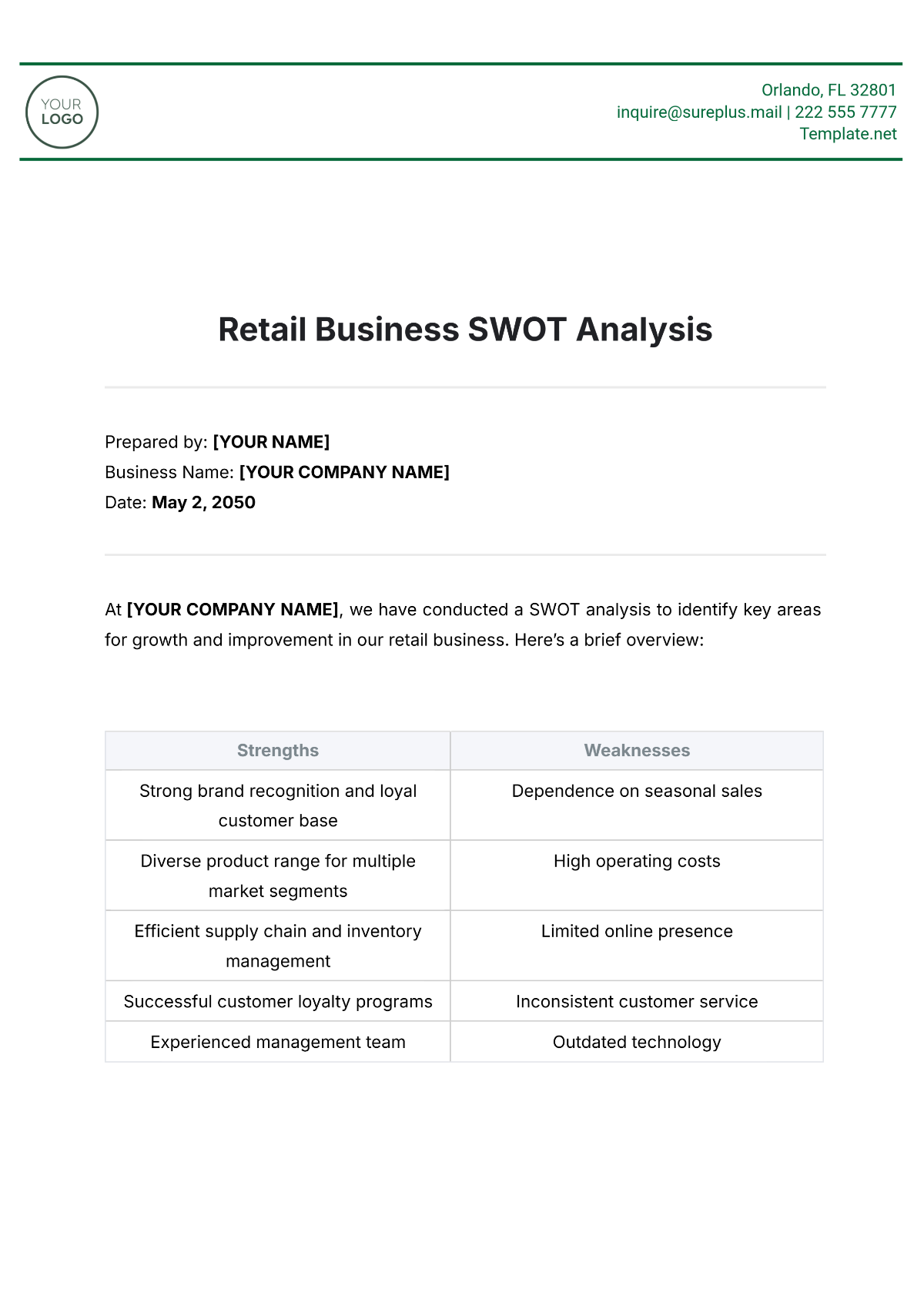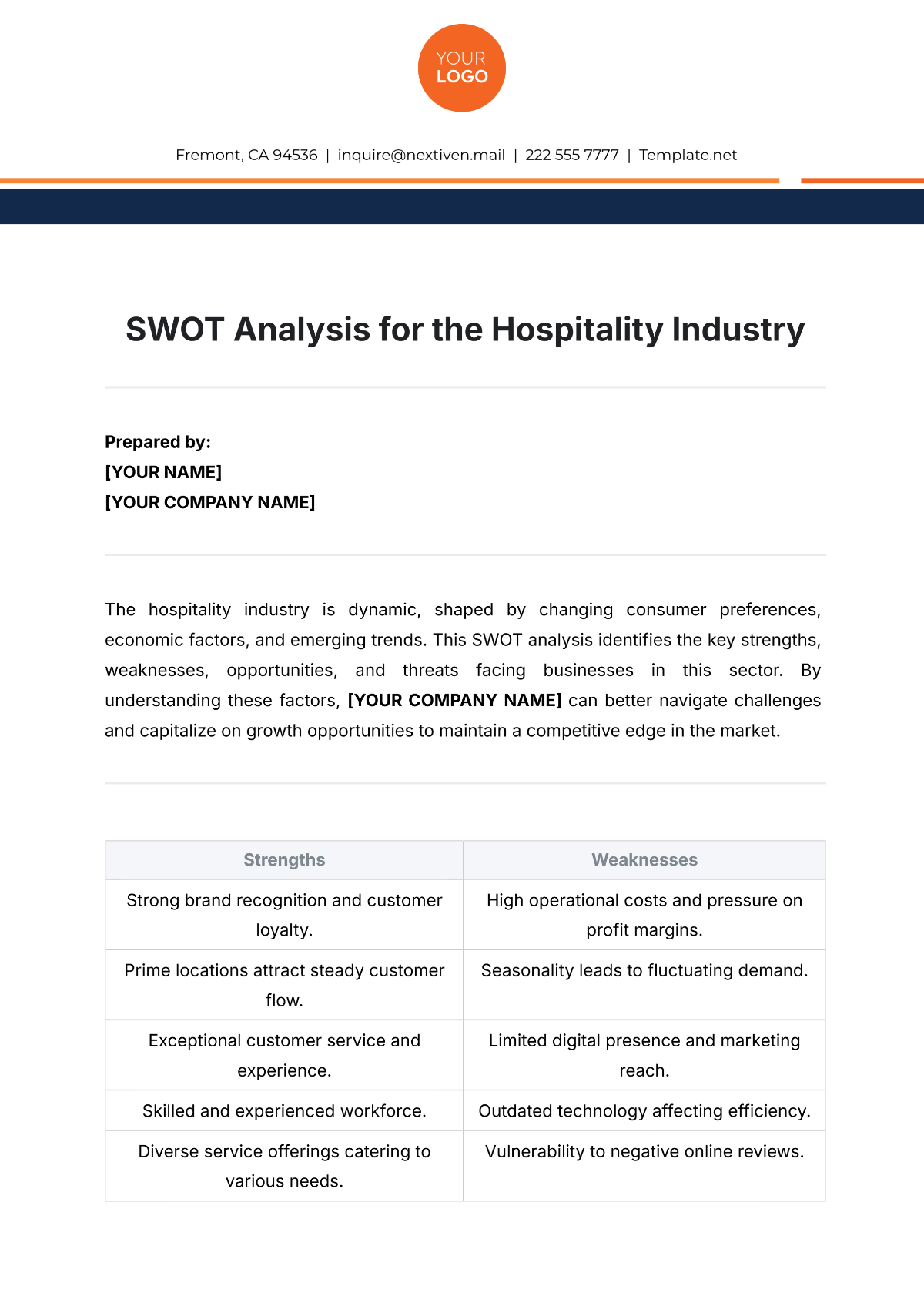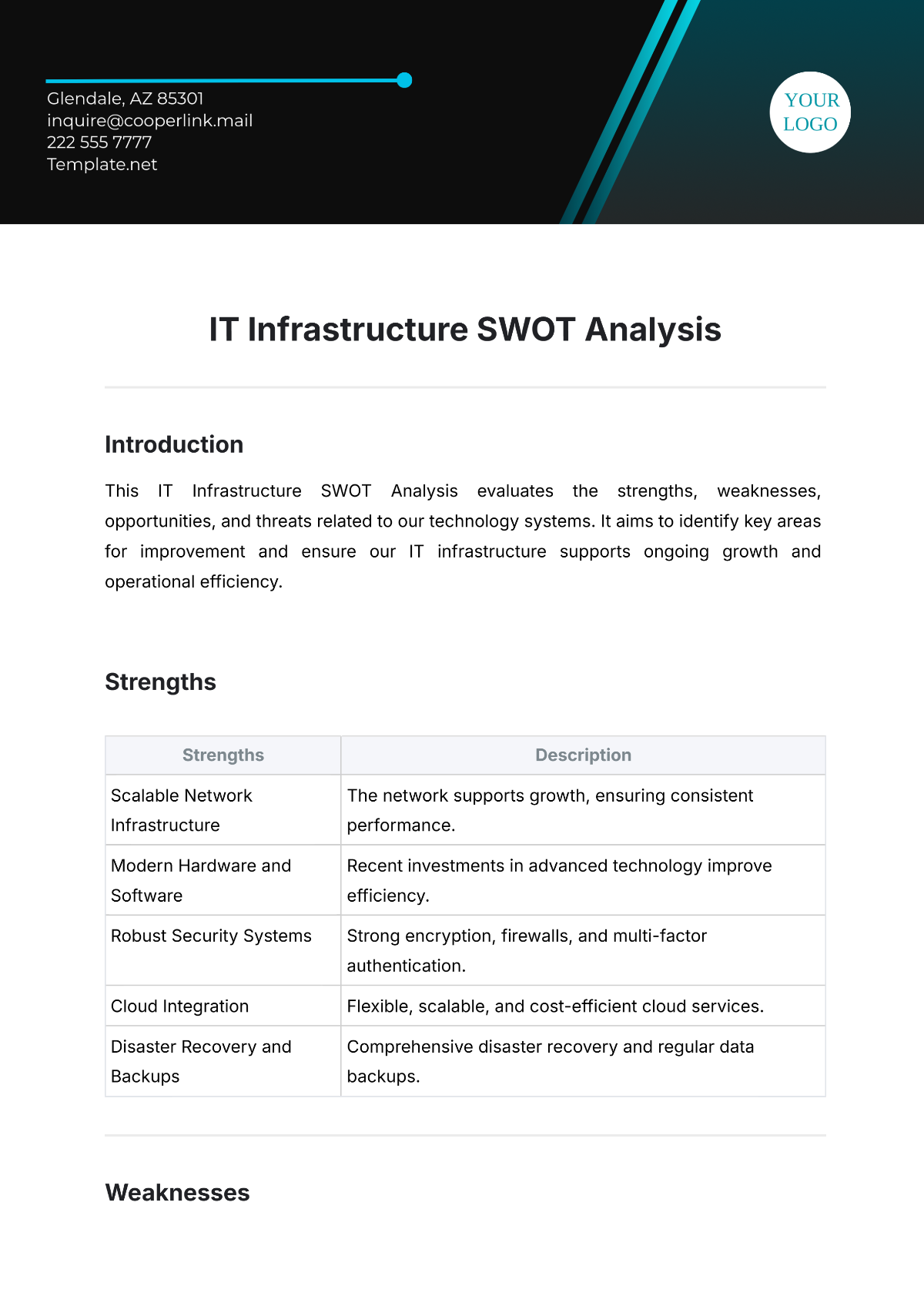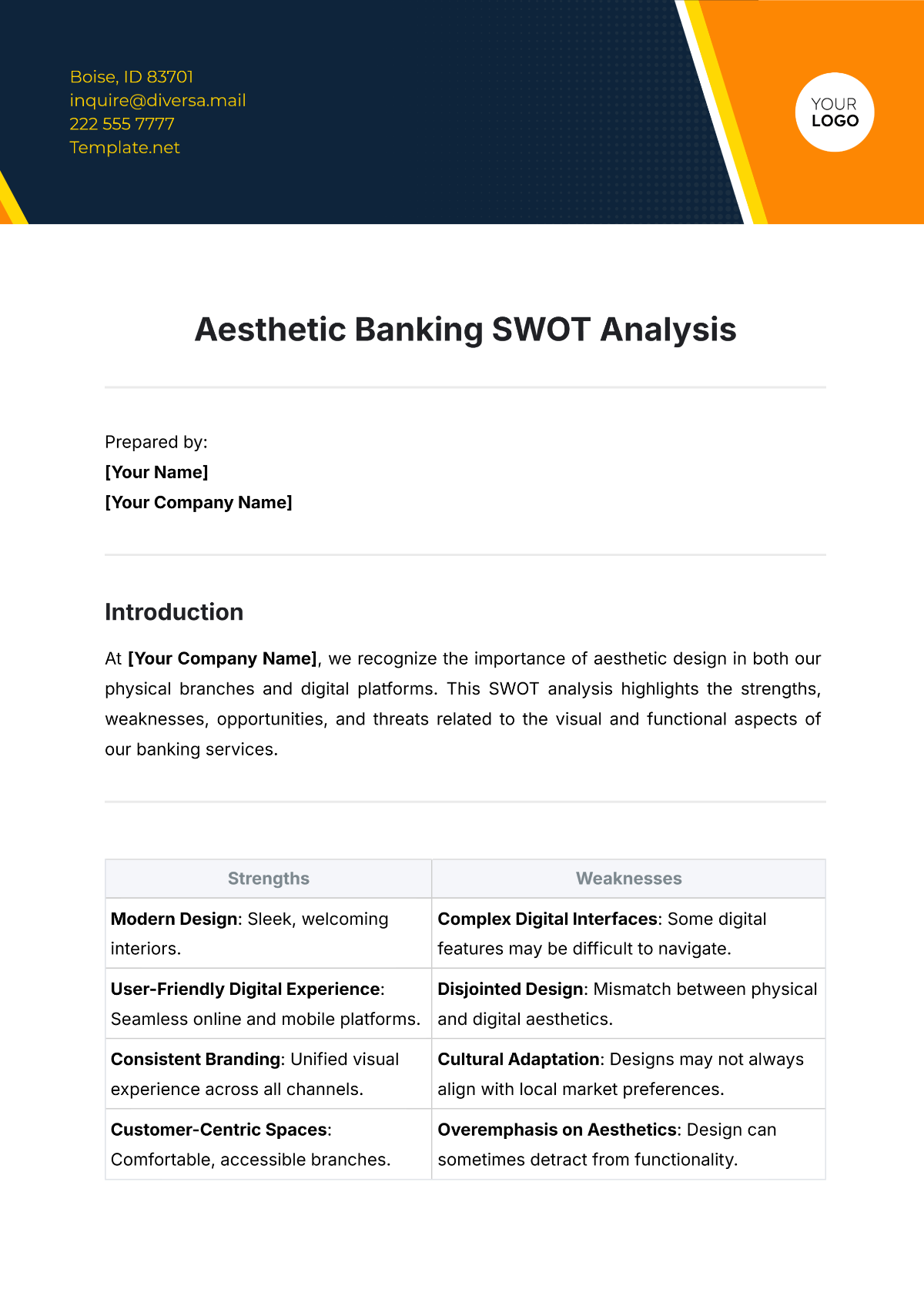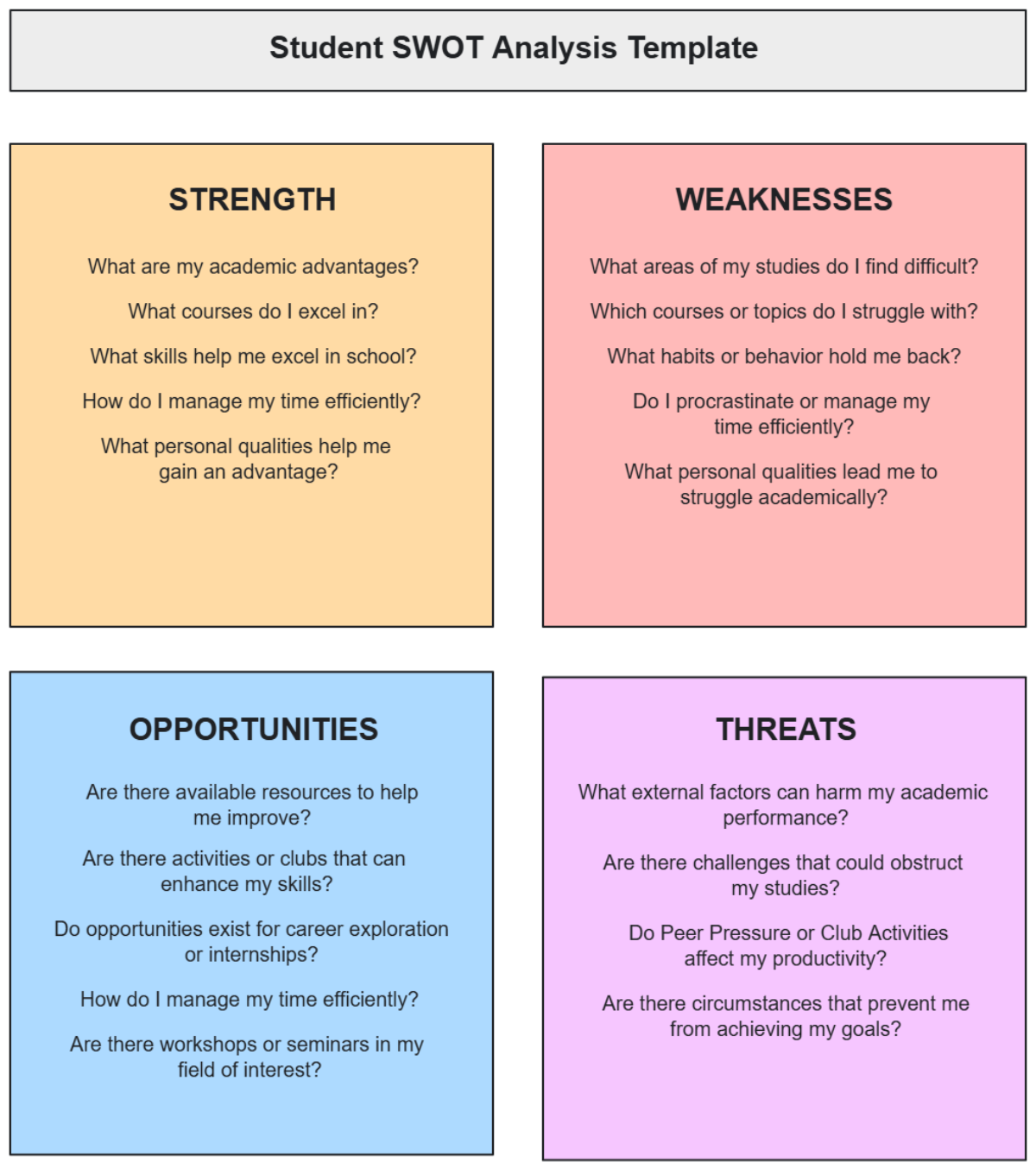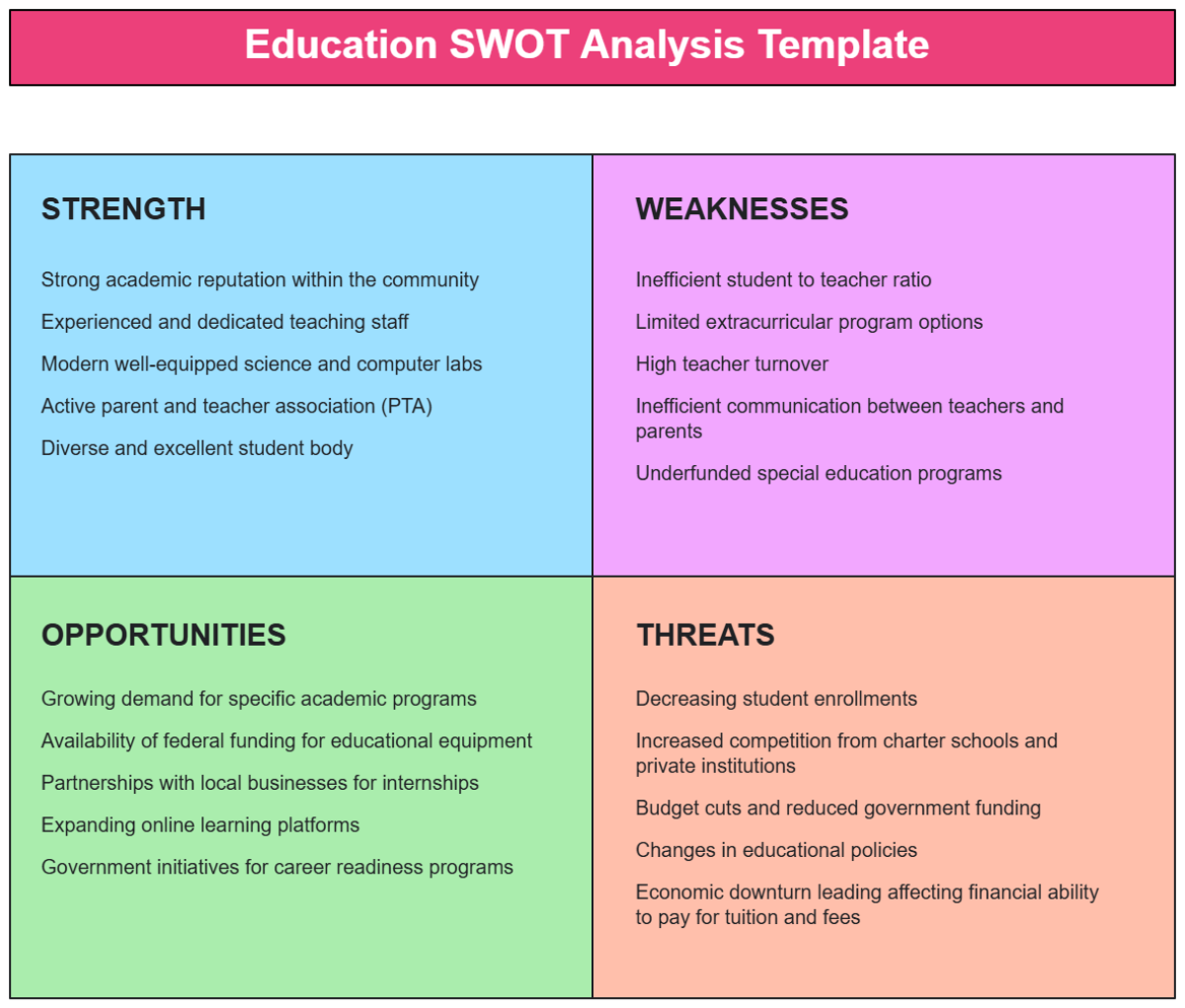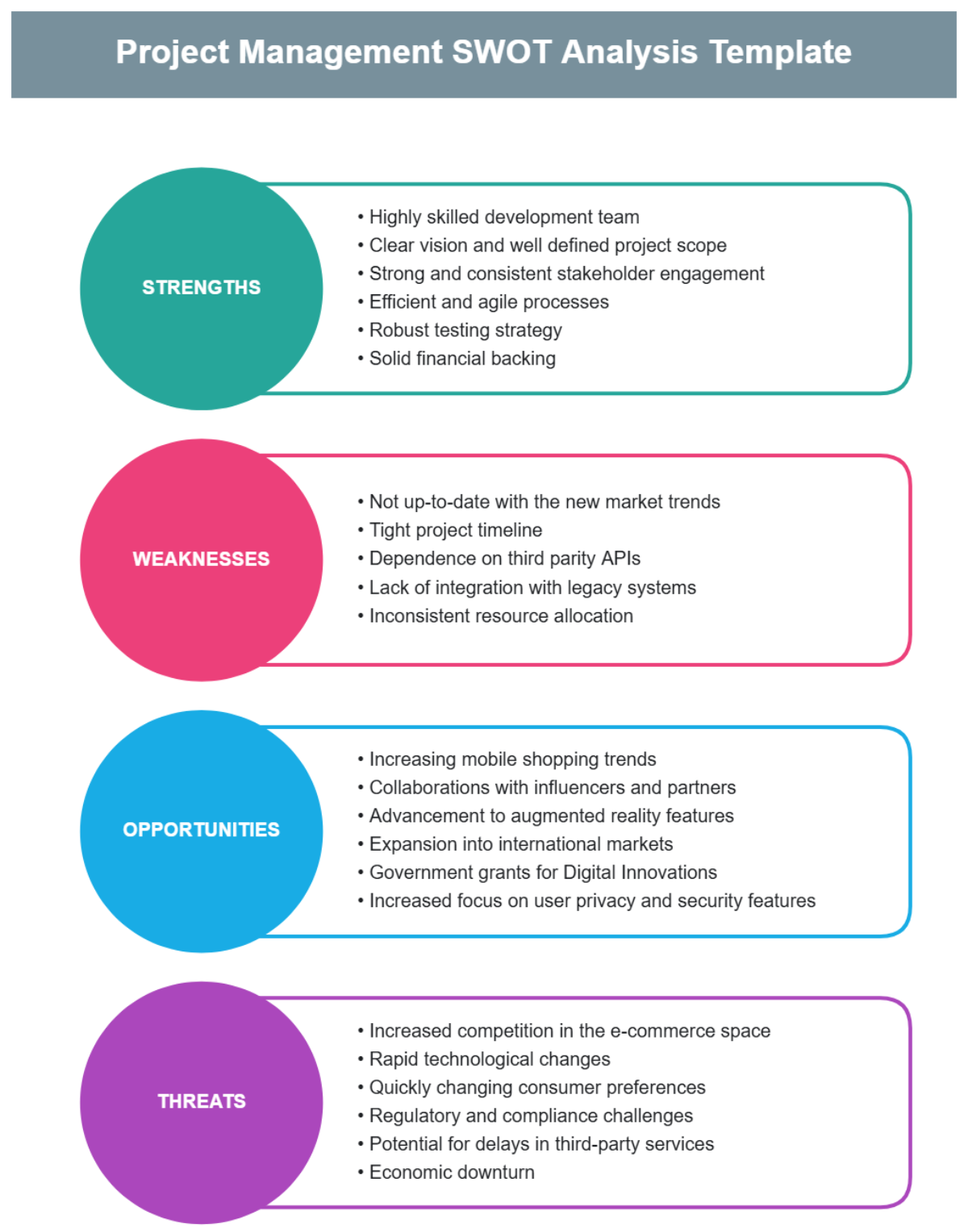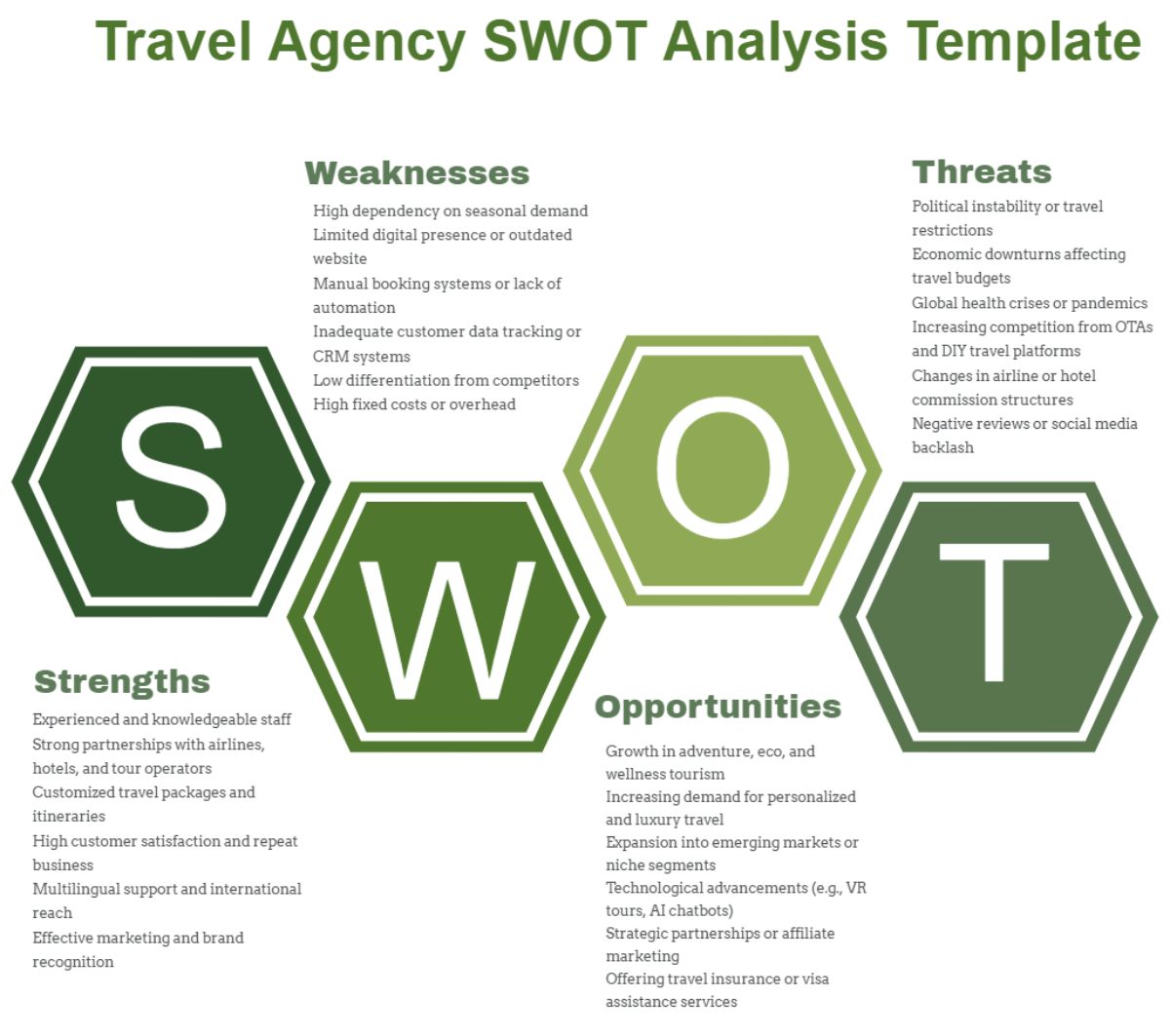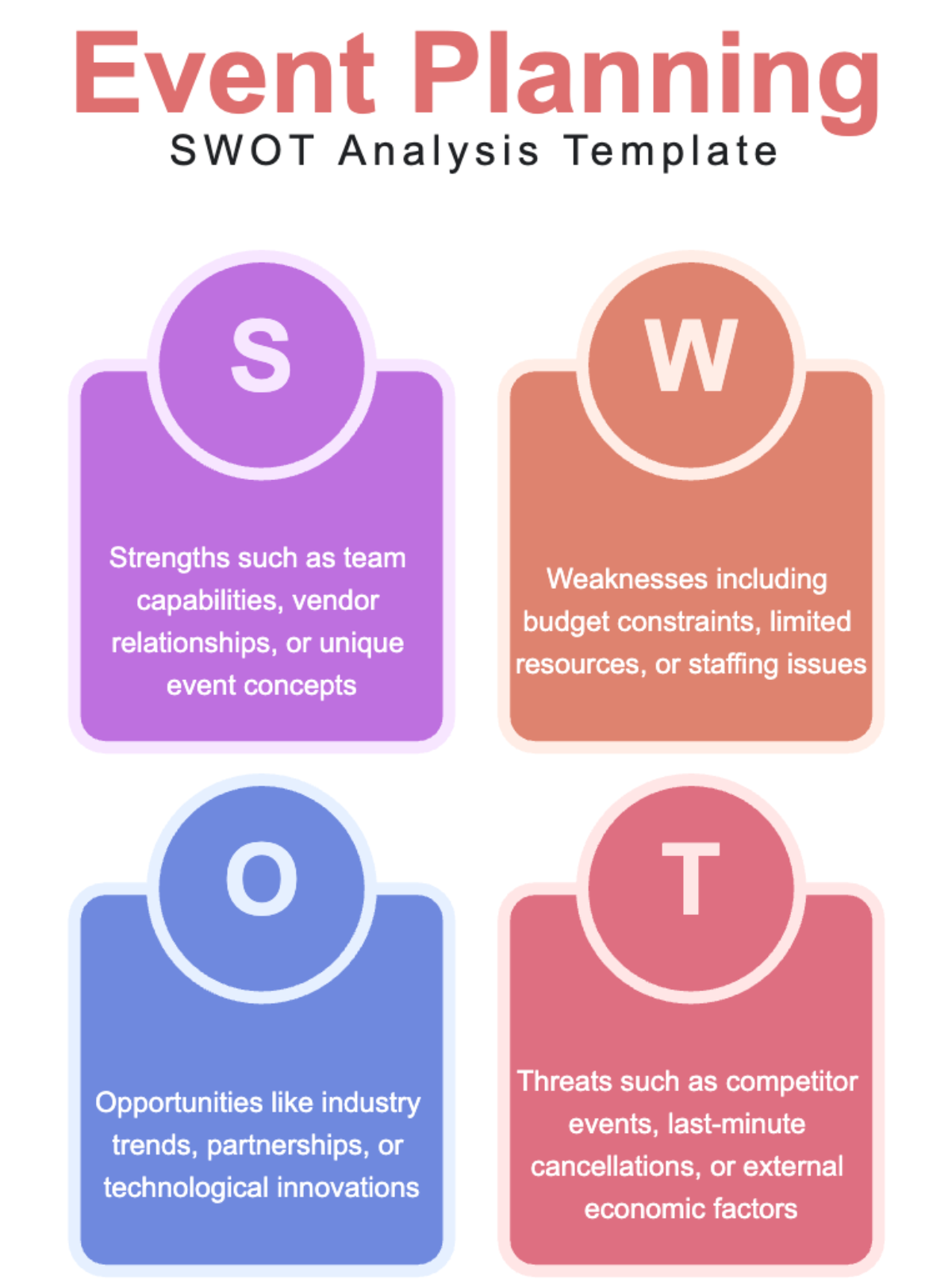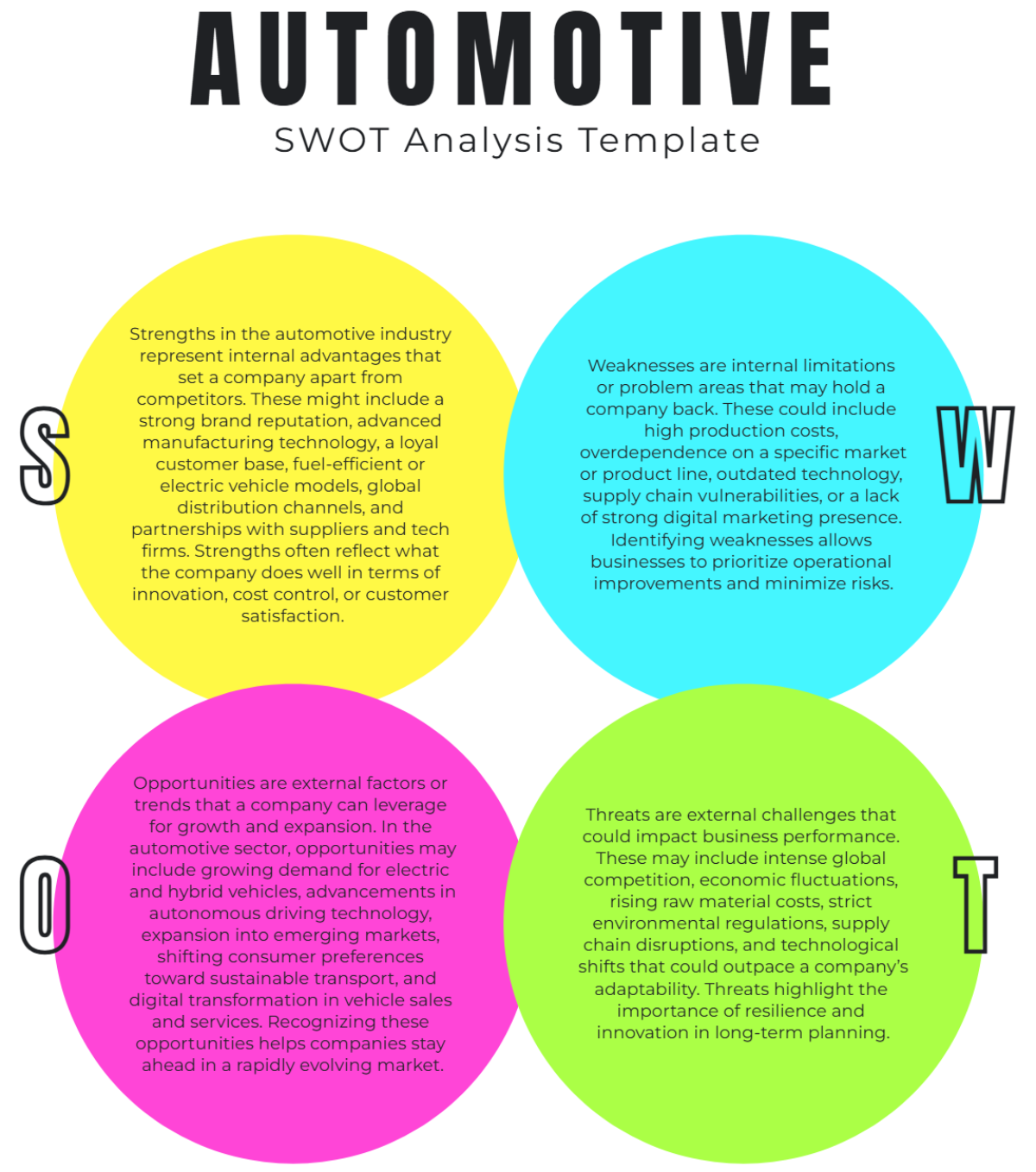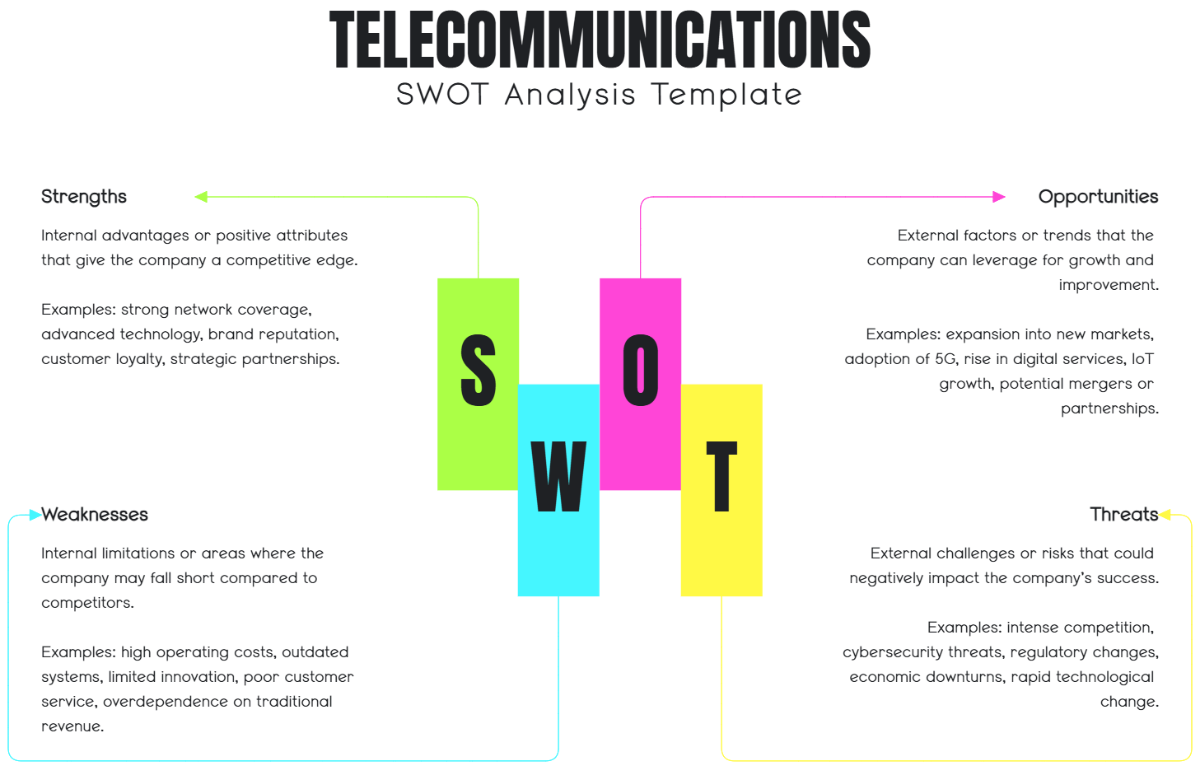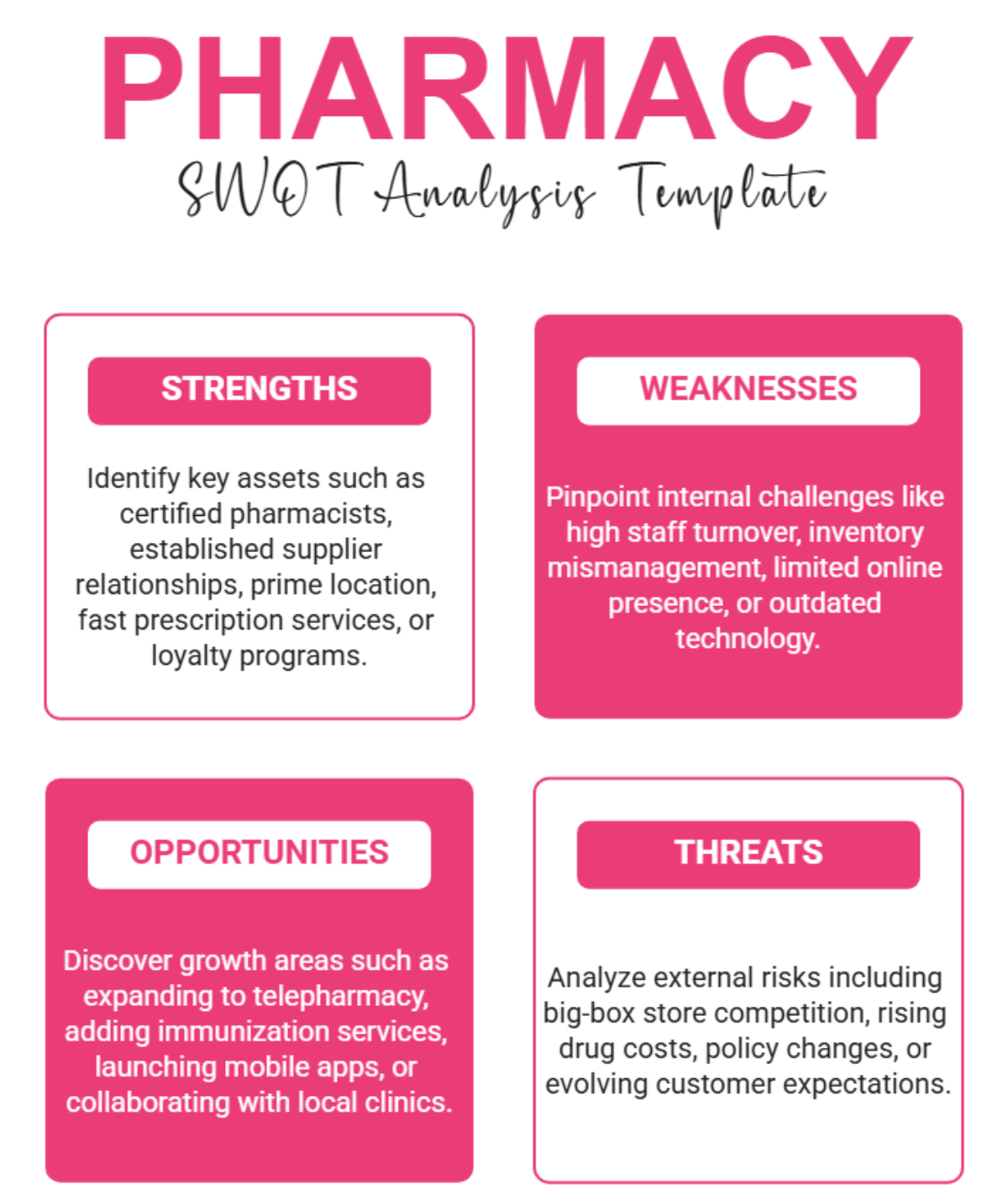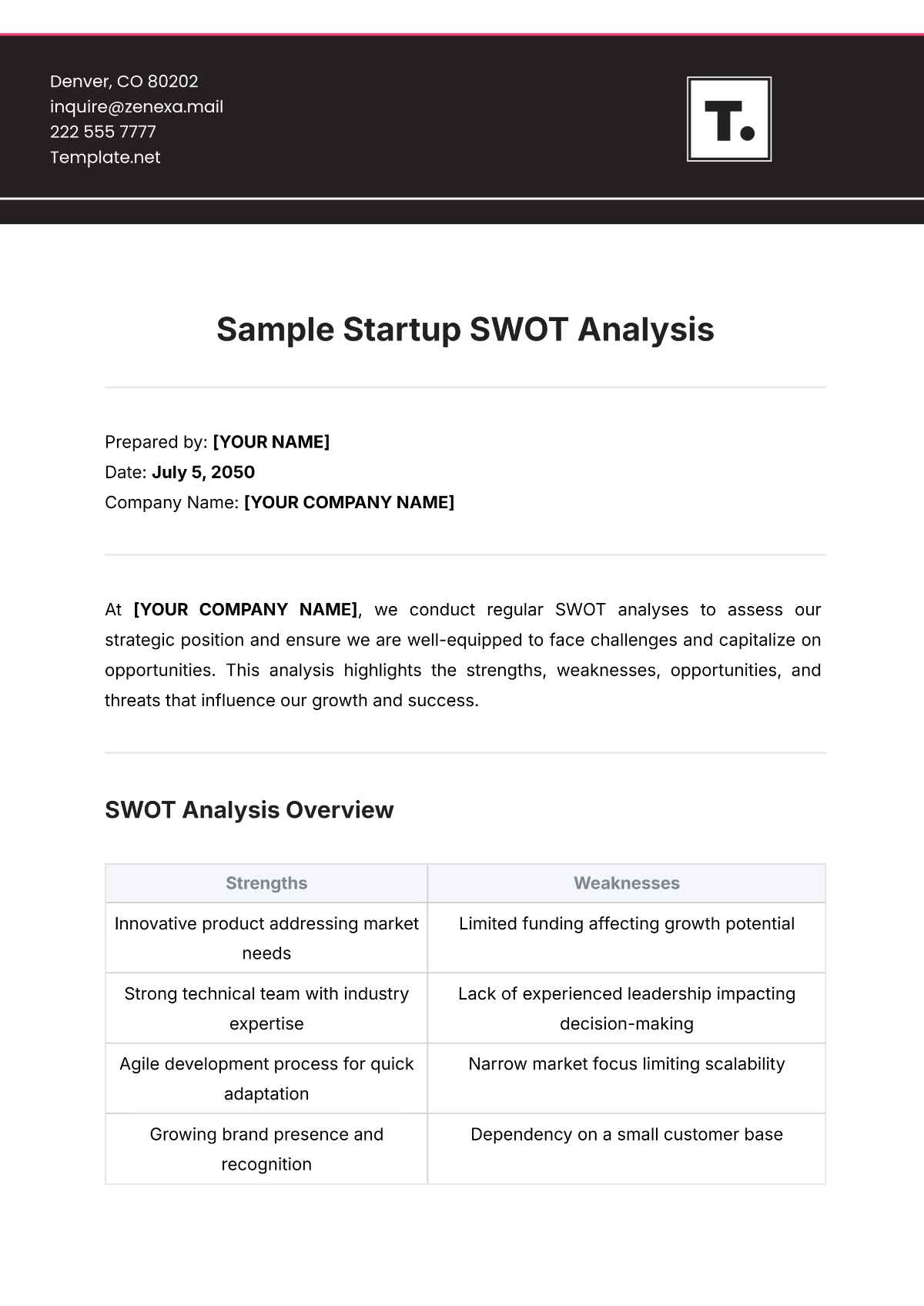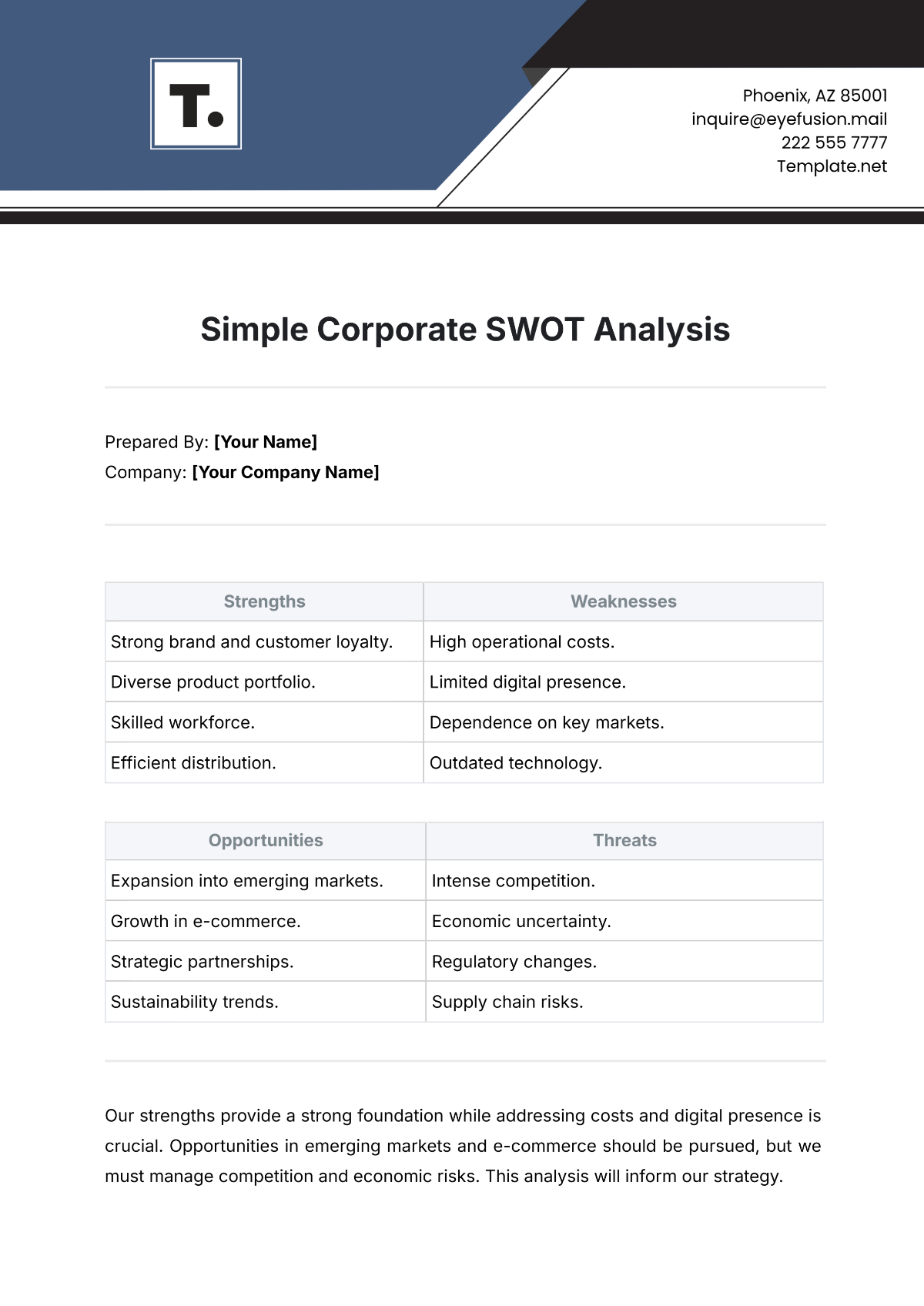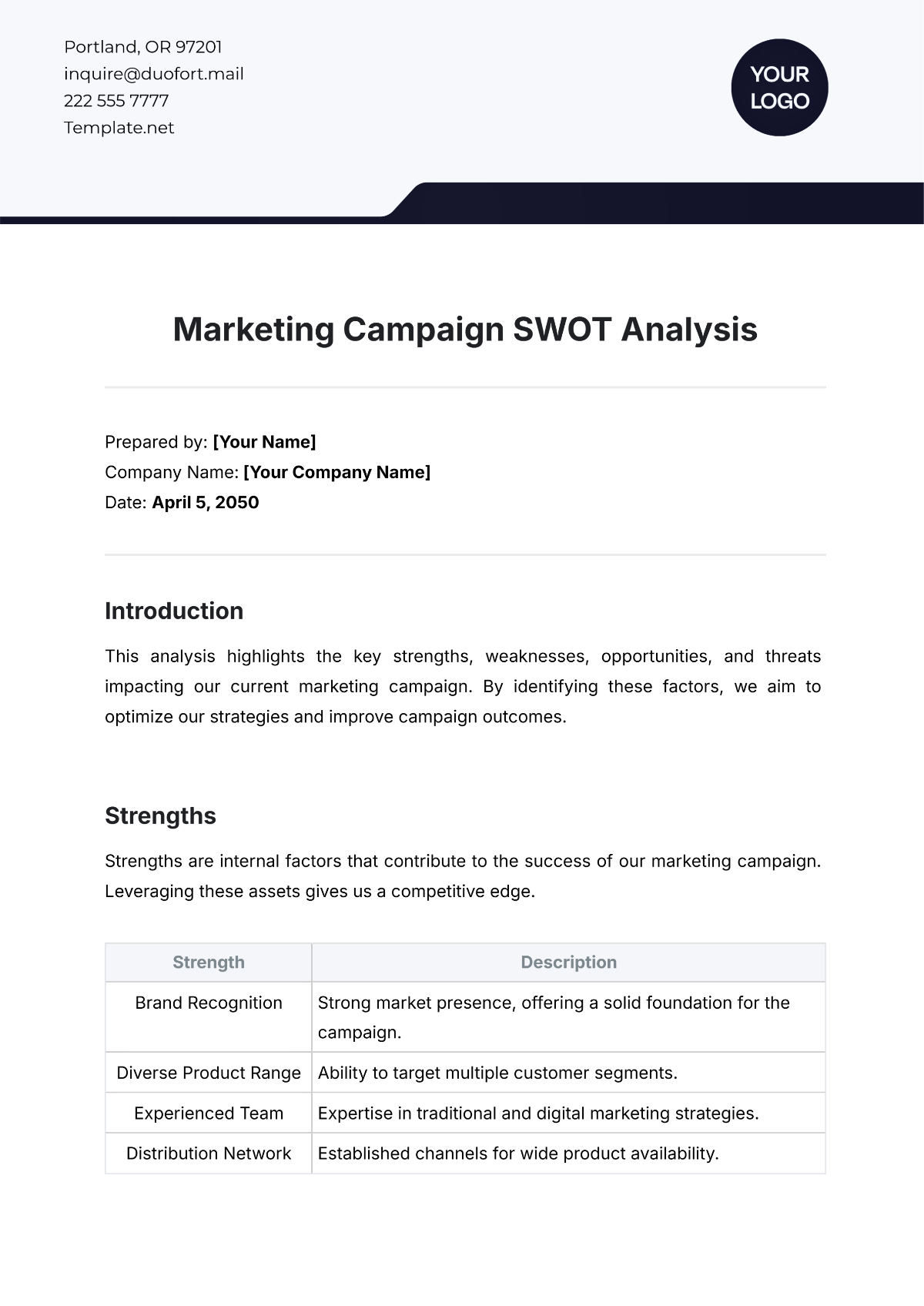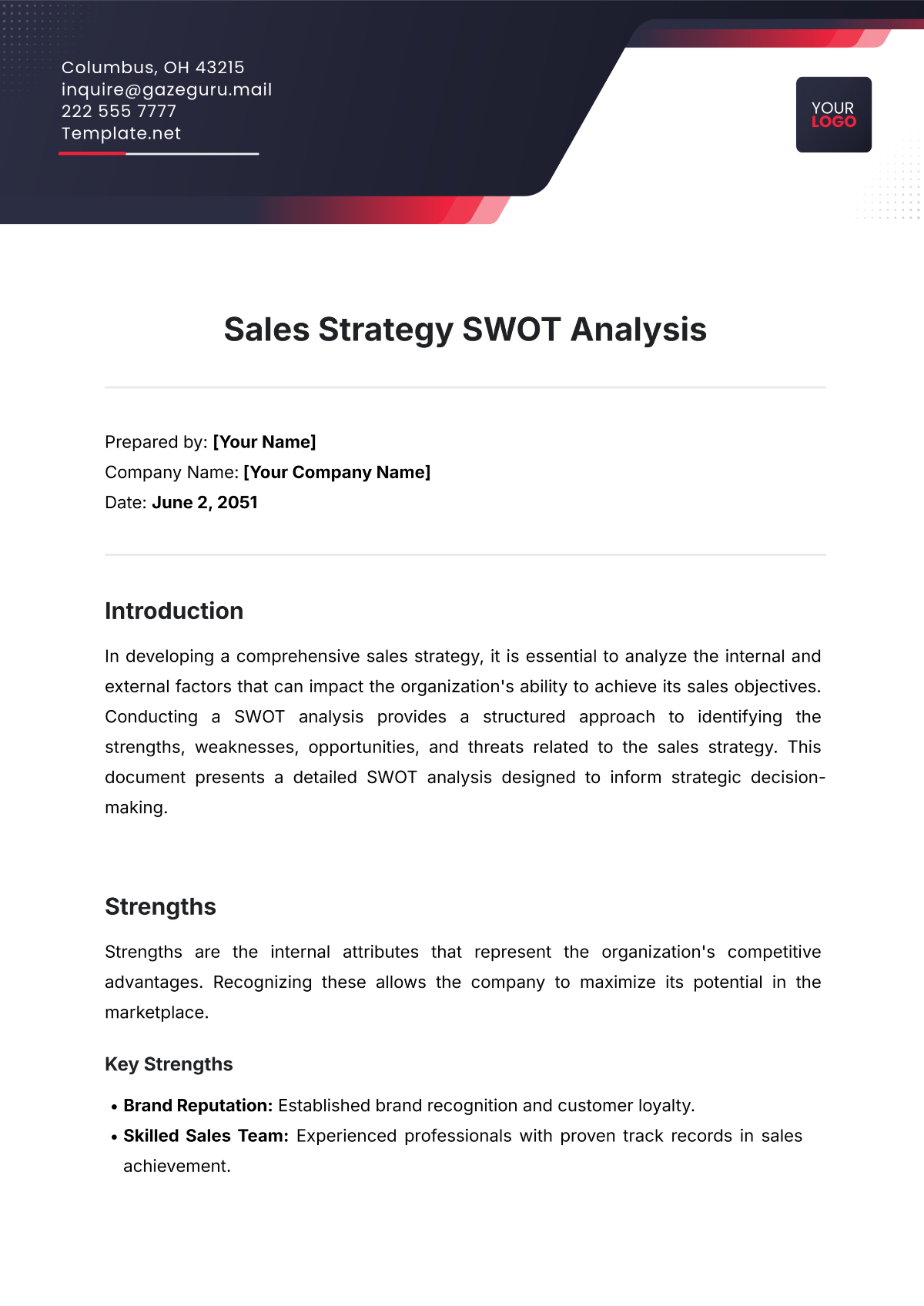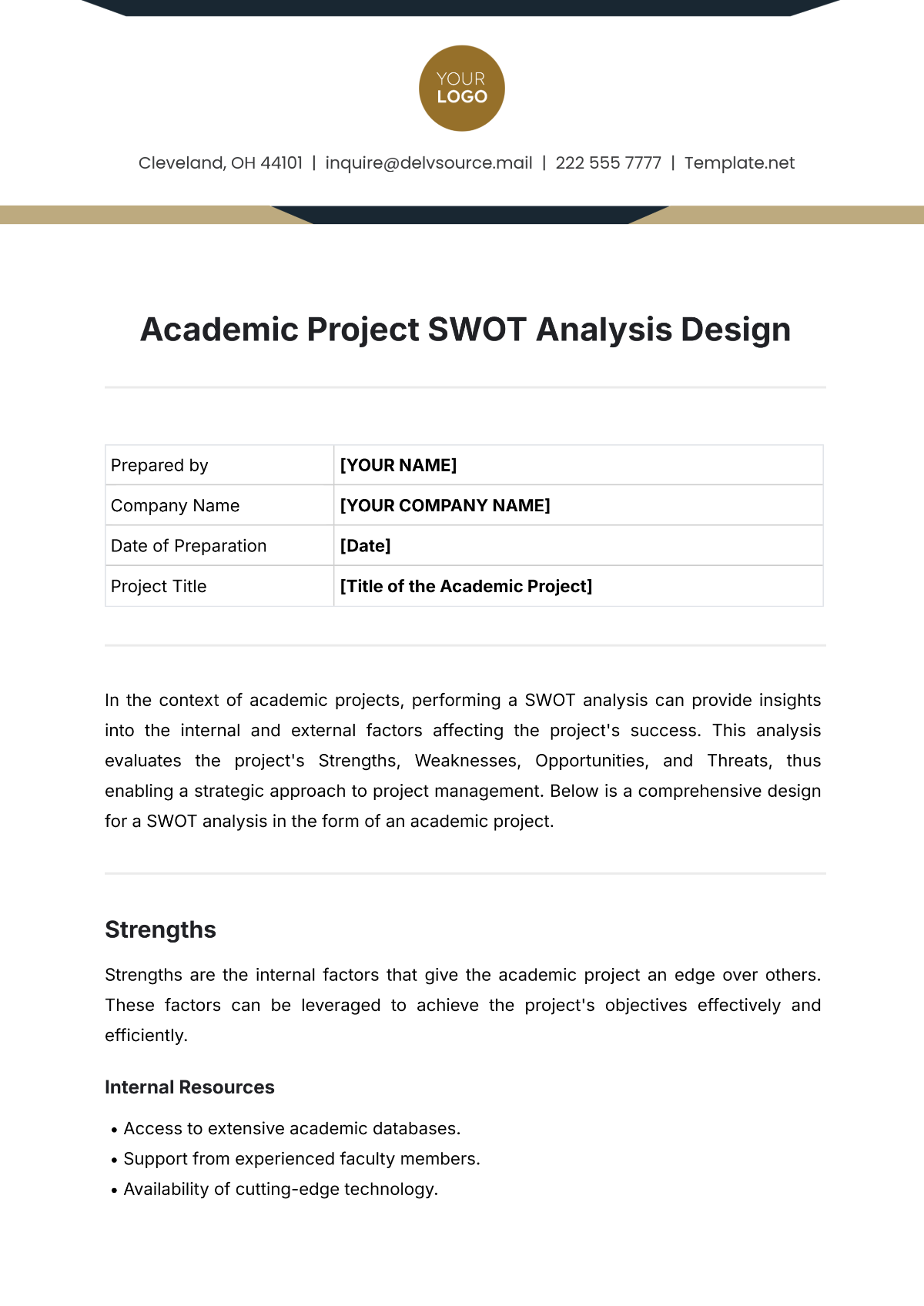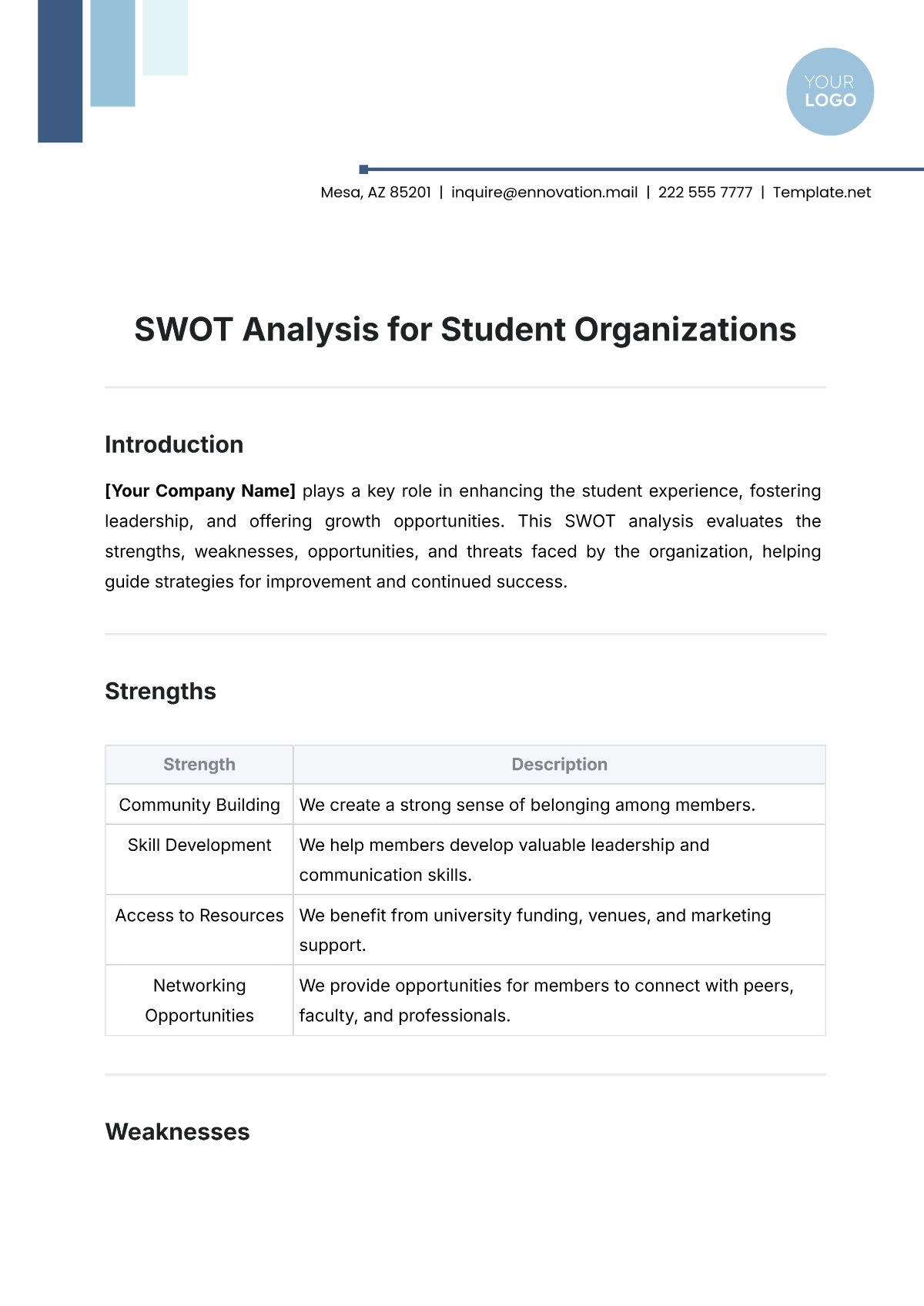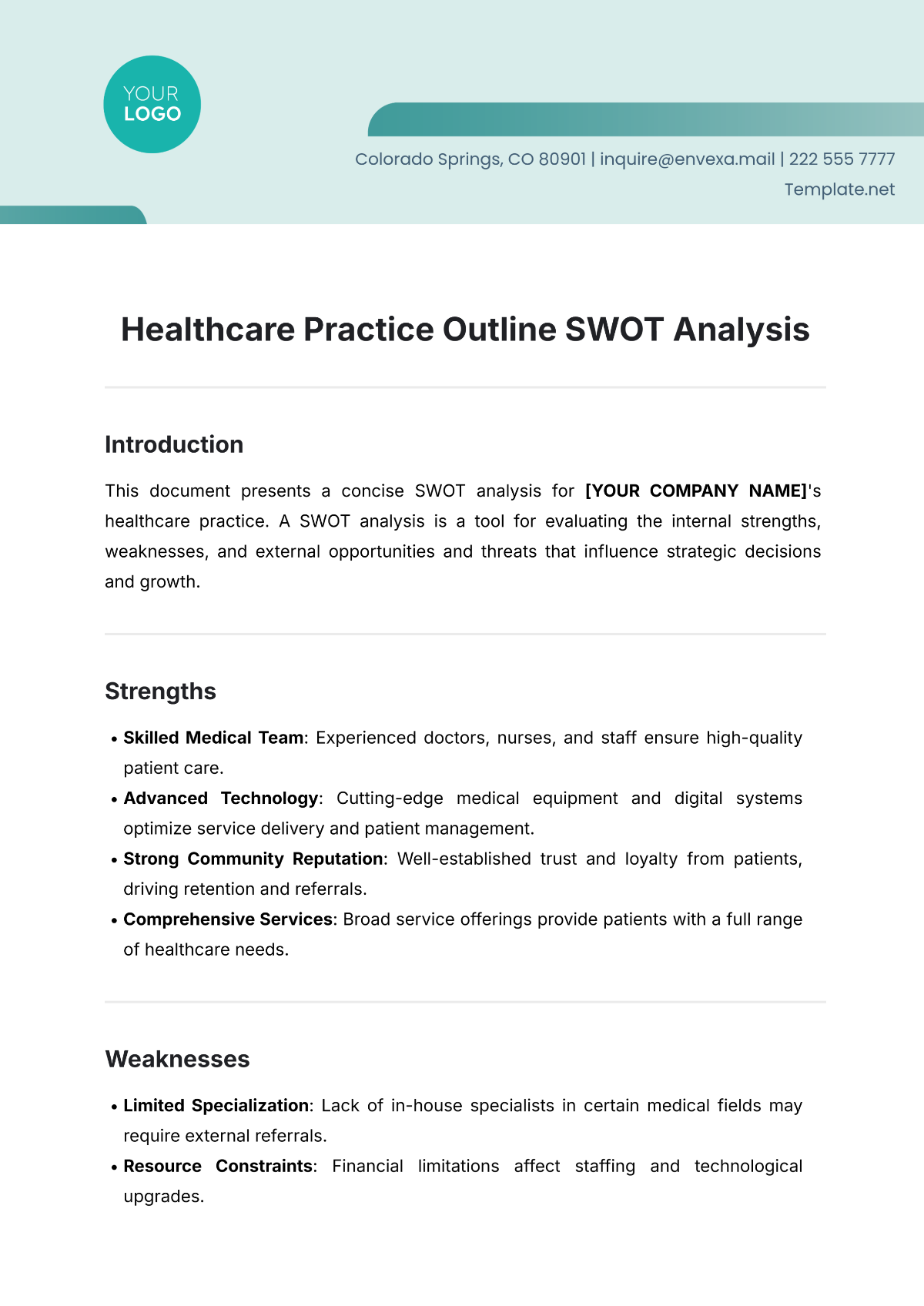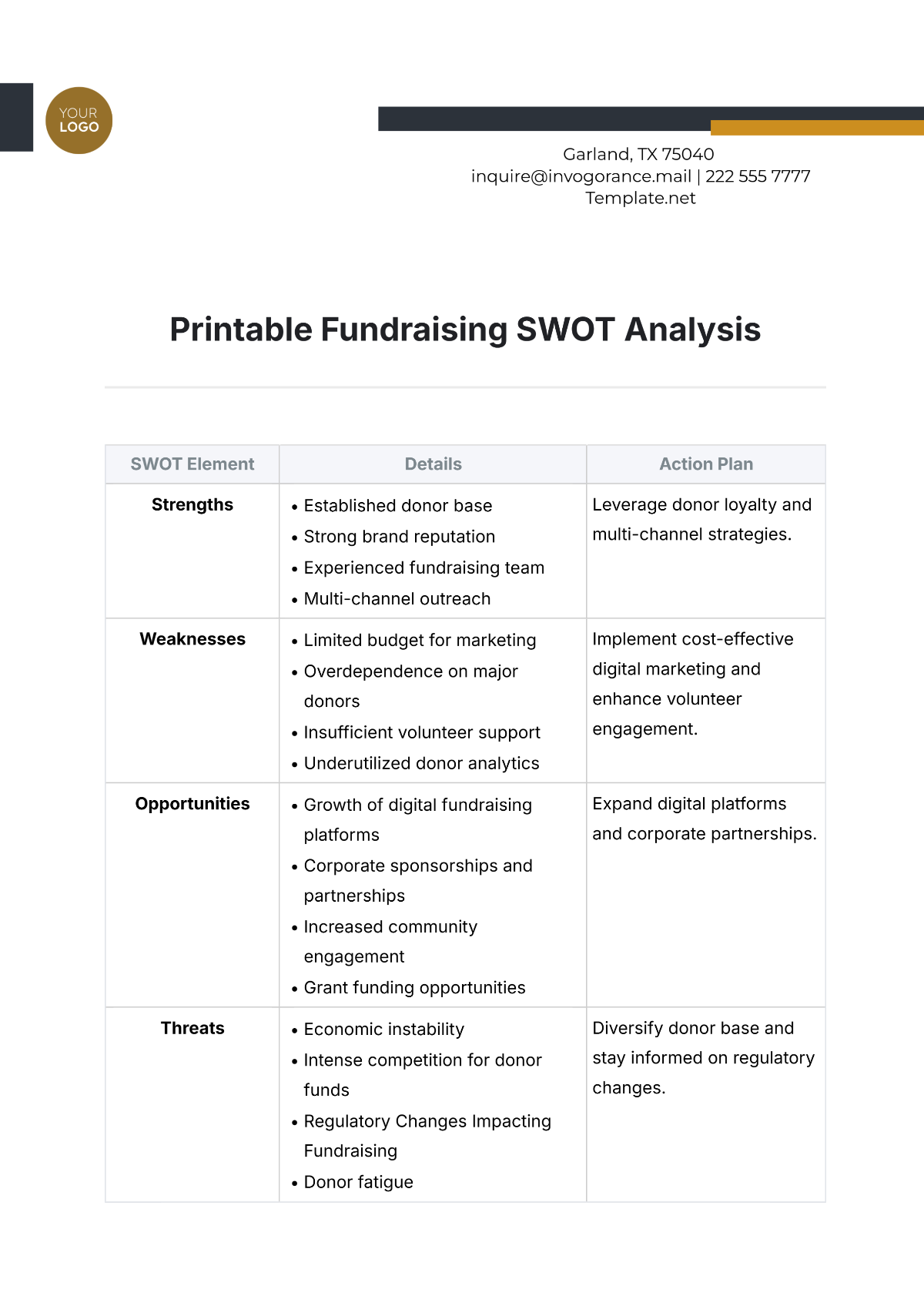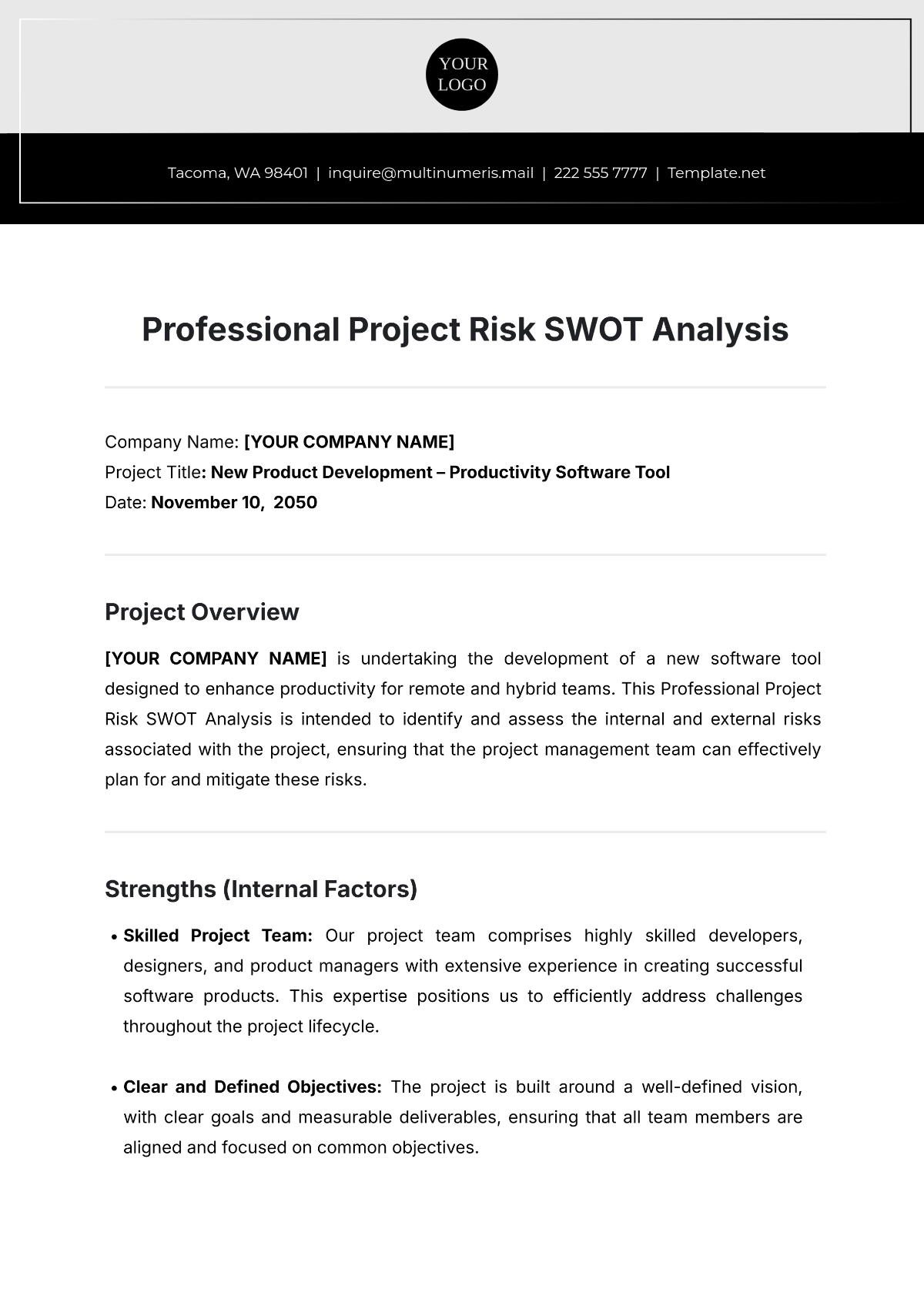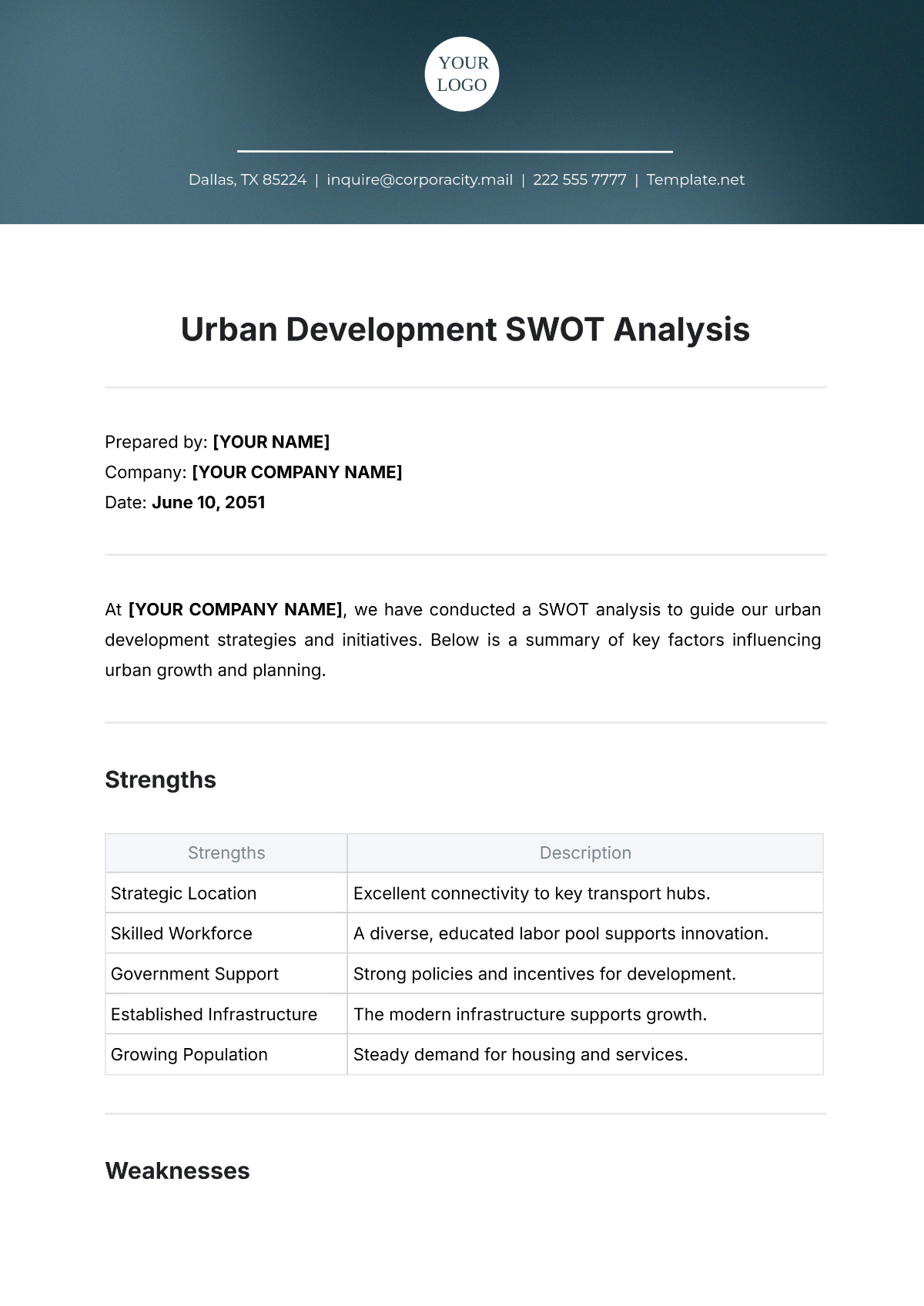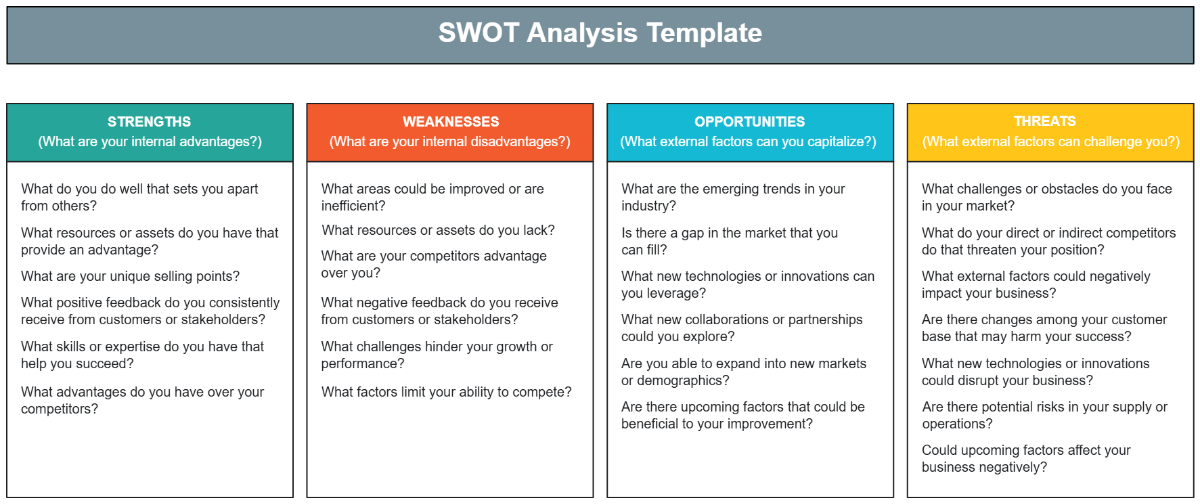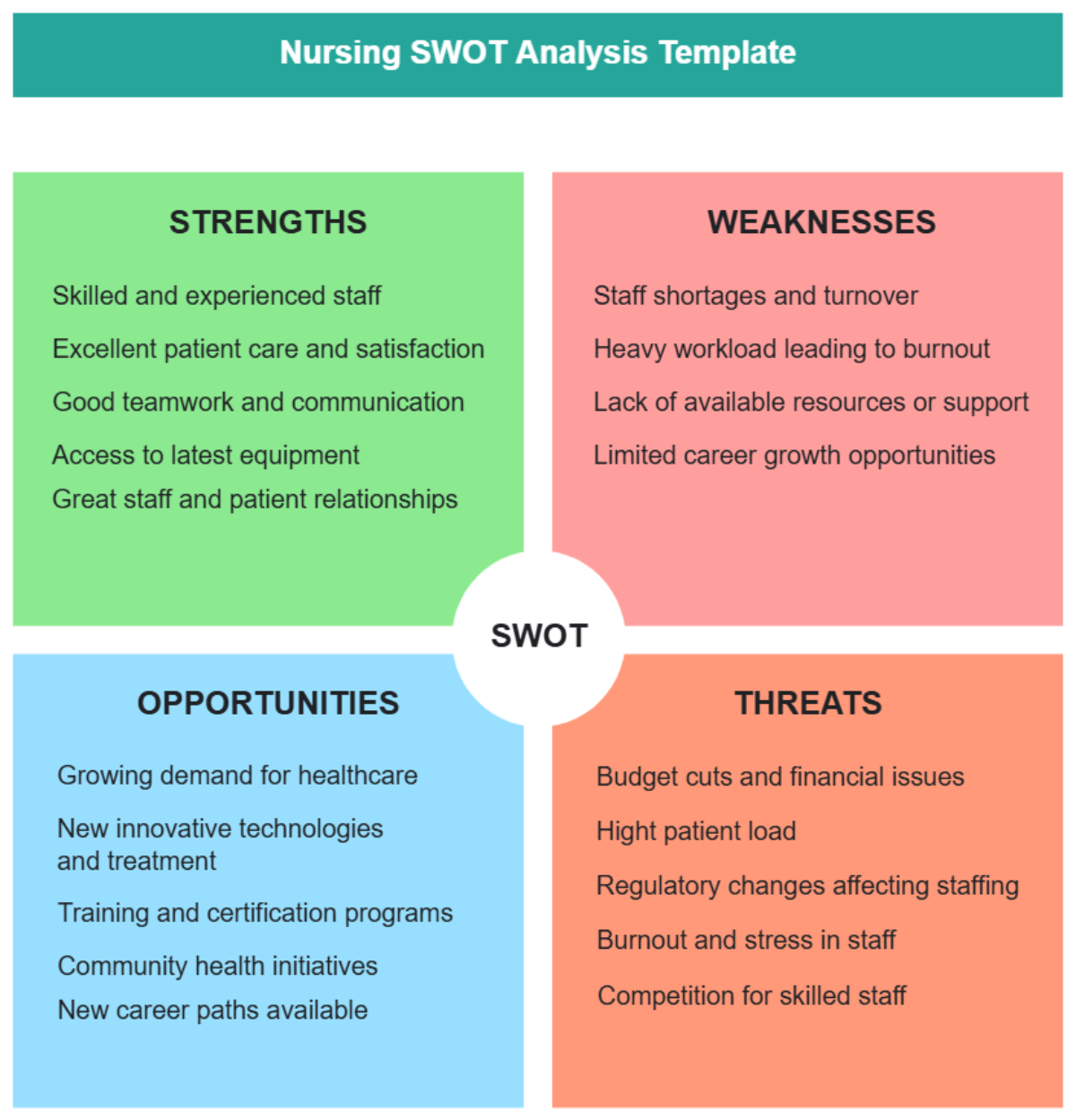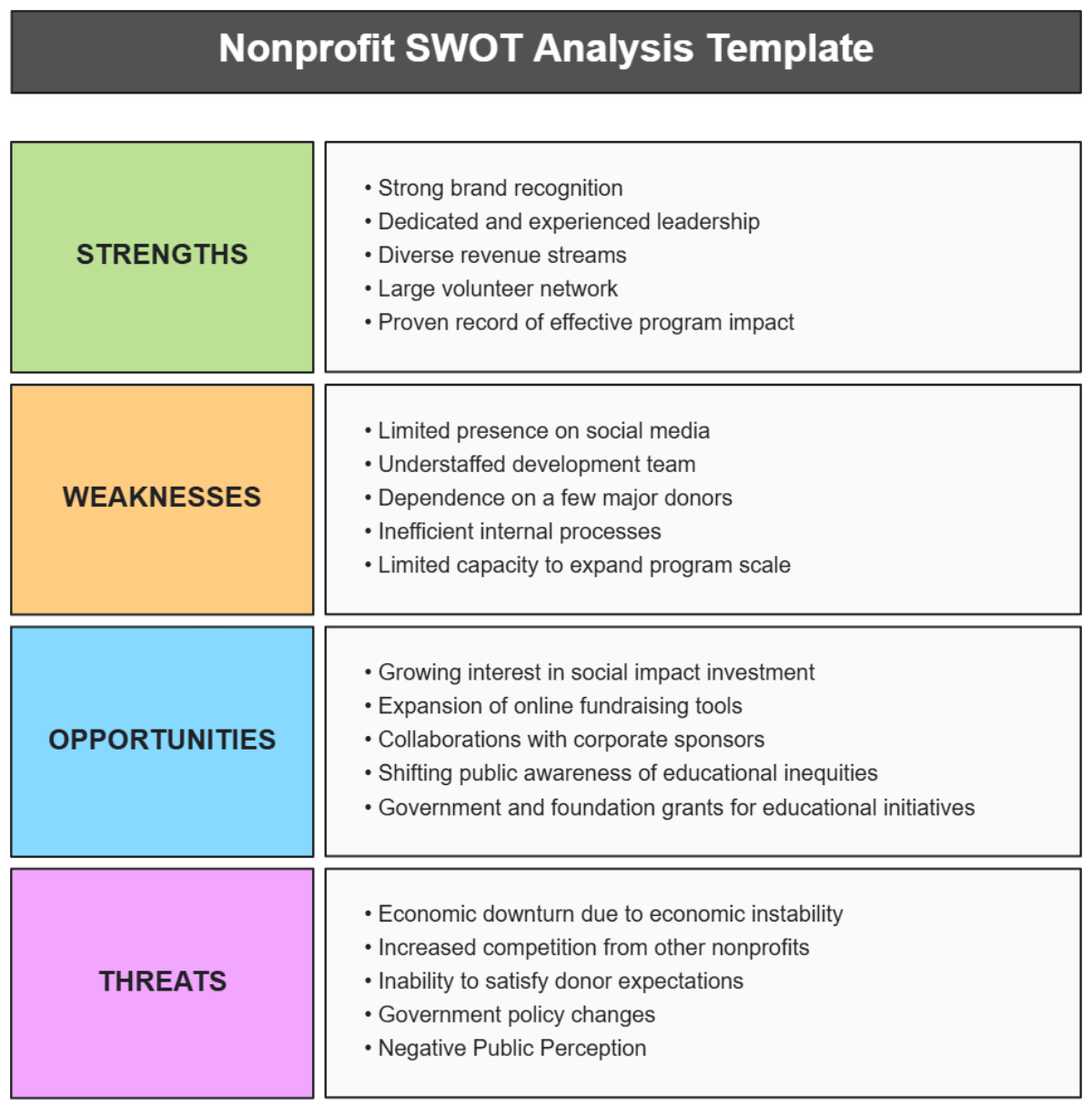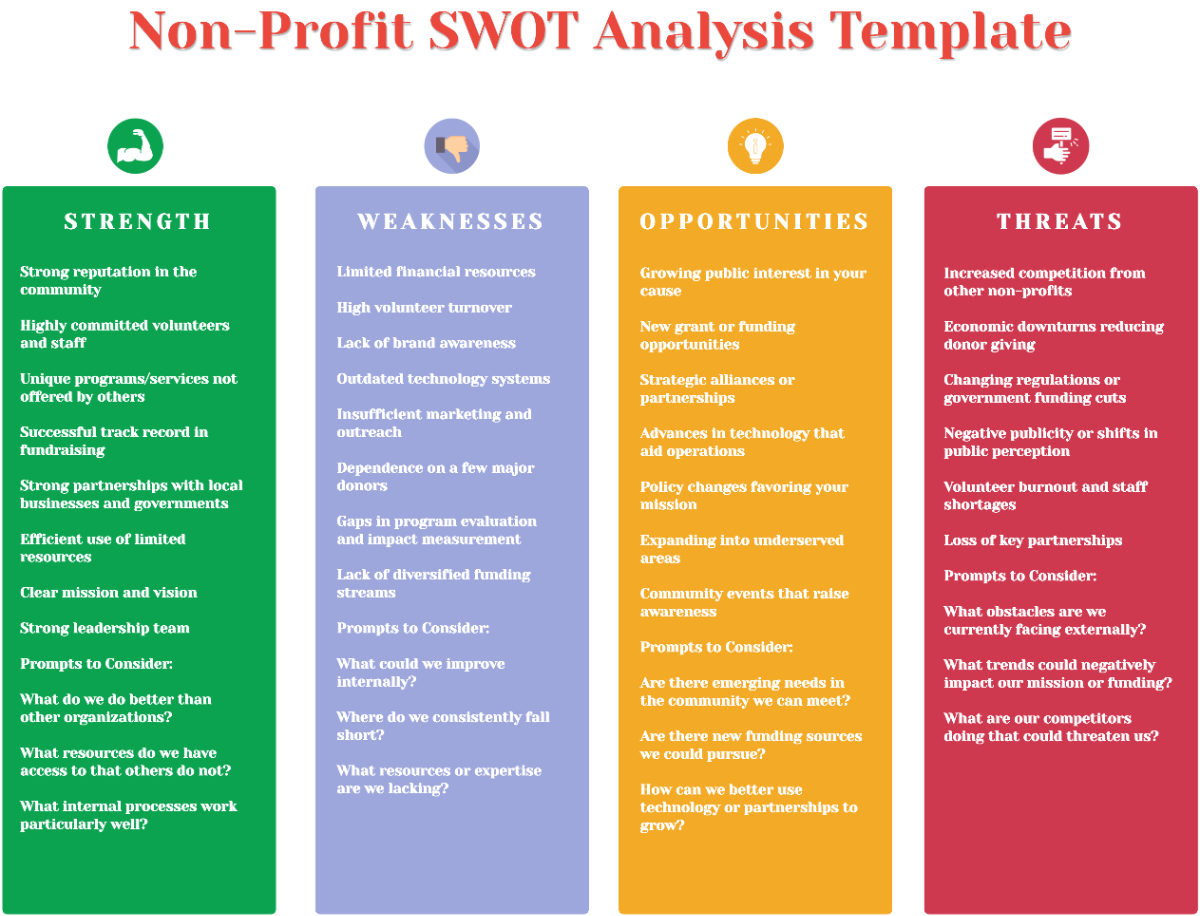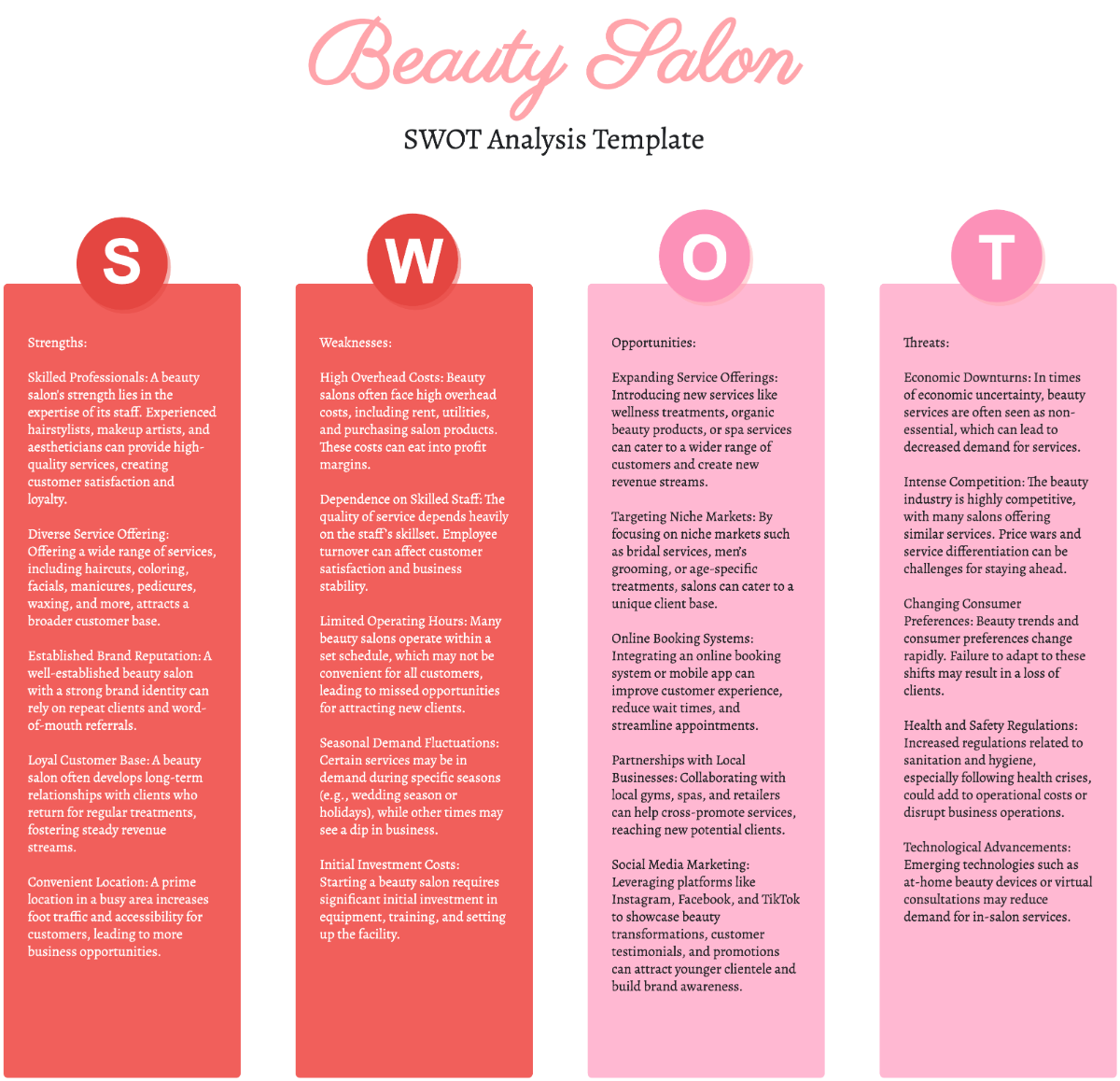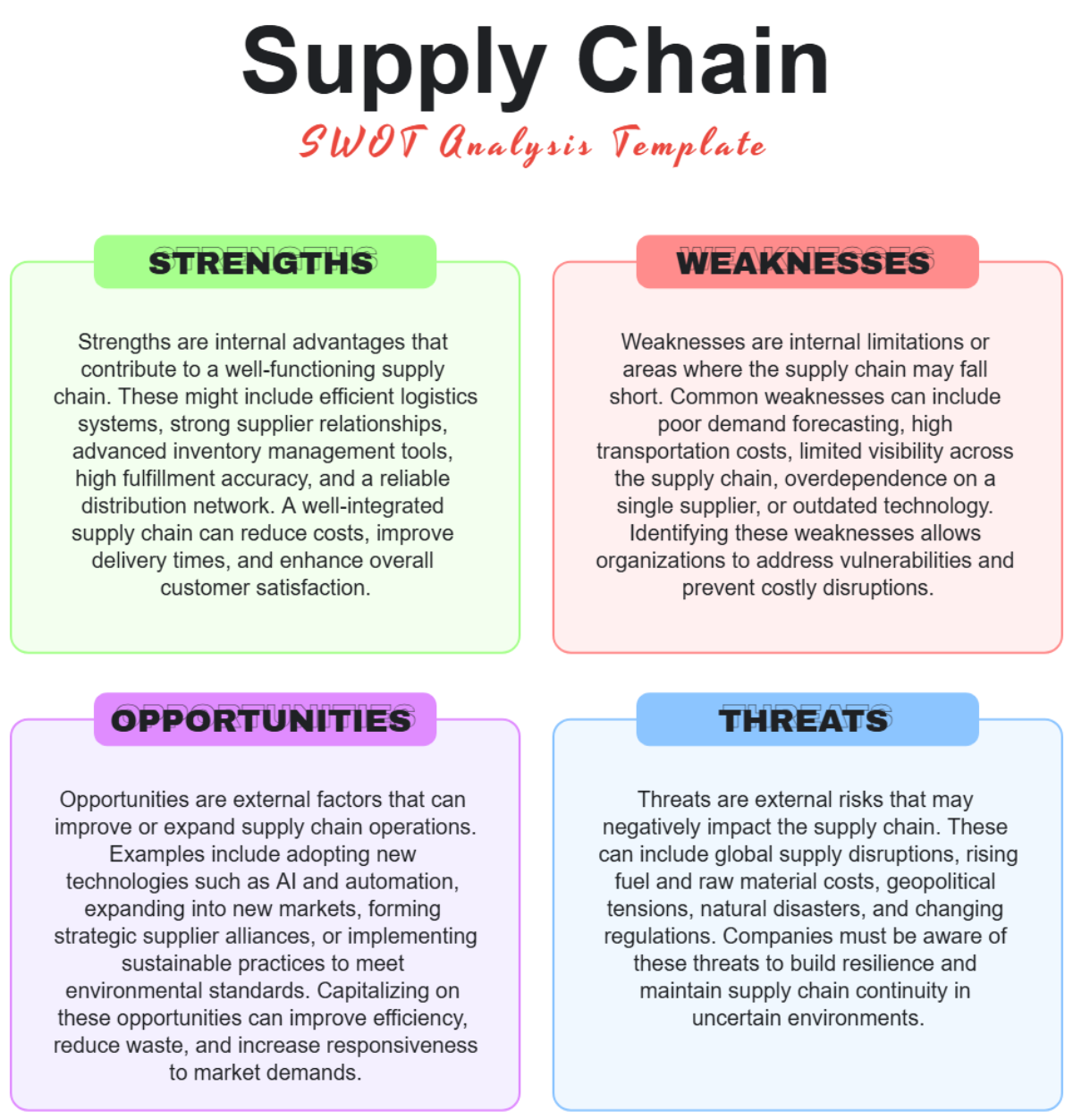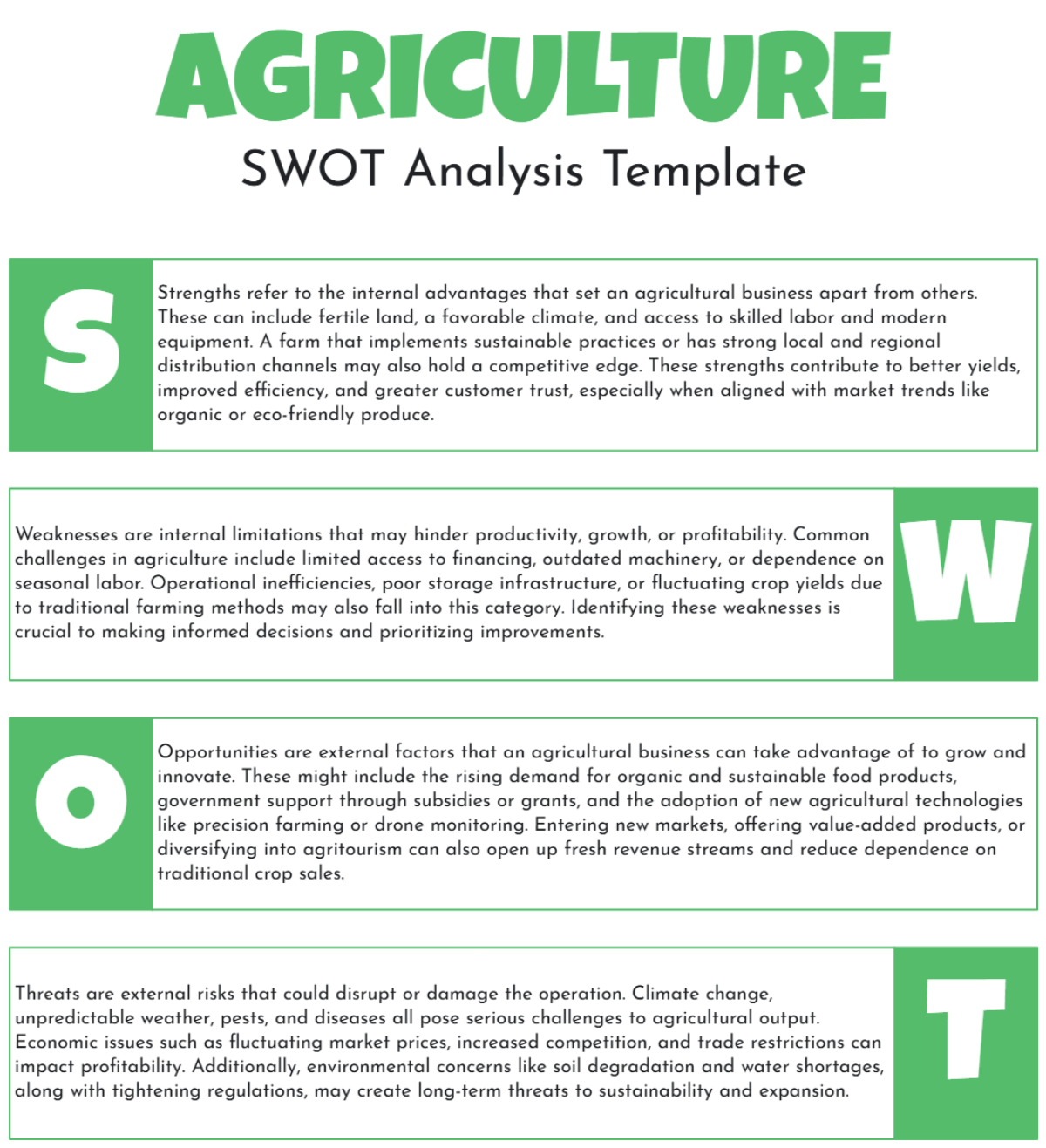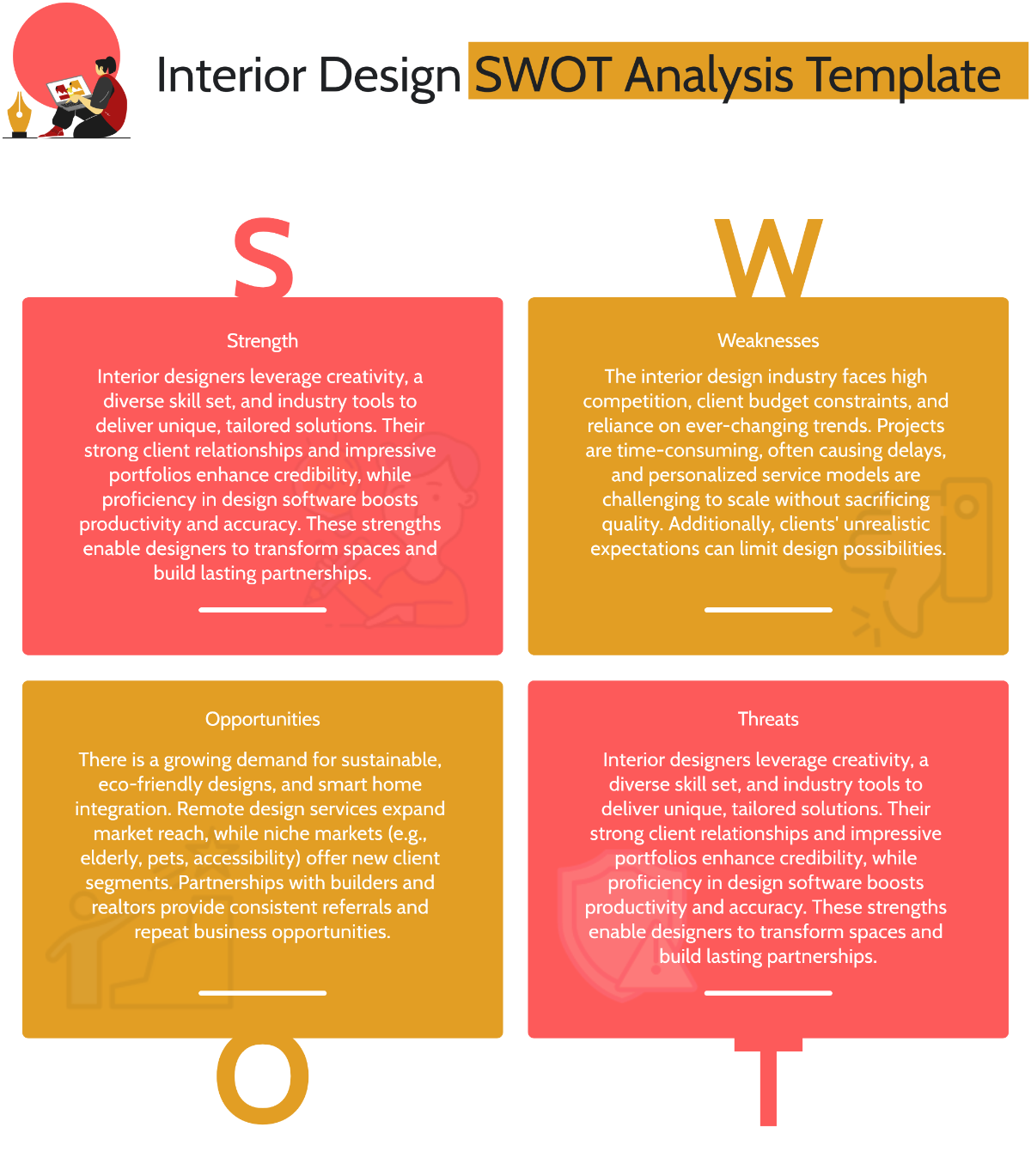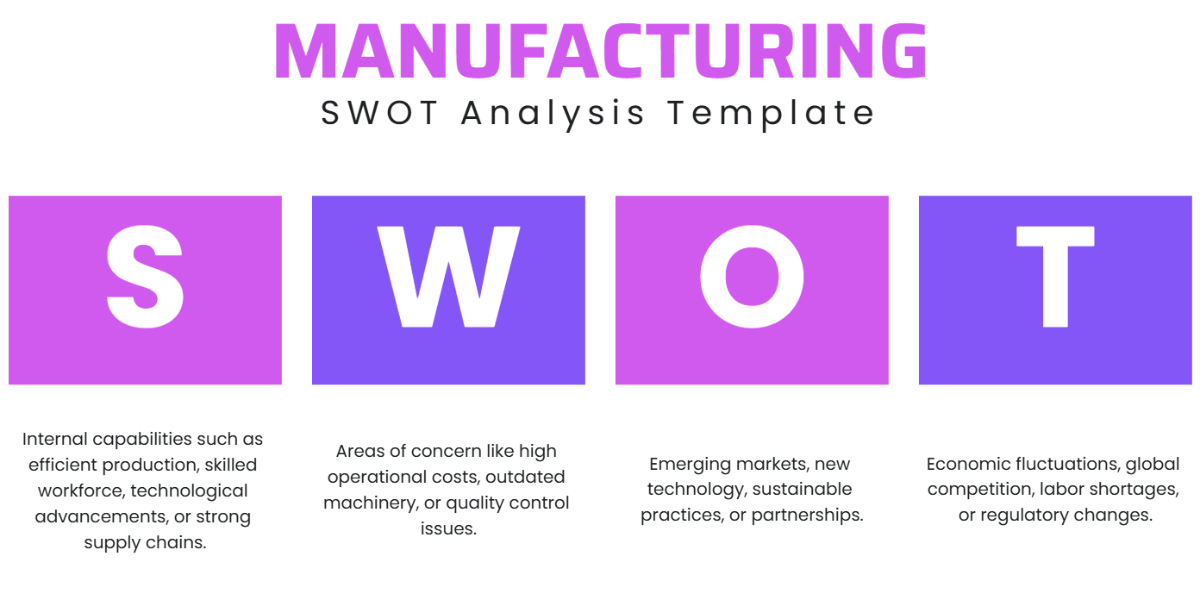SWOT Analysis Requirements
Prepared By: [YOUR NAME]
Date: [DATE]
I. Introduction
The main purpose of this document is to offer a thorough guide on the criteria, methods, and steps required to perform a SWOT analysis—an evaluation of Strengths, Weaknesses, Opportunities, and Threats—which aims to enhance our understanding of the internal and external factors impacting our organization and support strategic planning and informed decisions.
II. Objectives
Evaluate in detail the various capabilities and resources possessed by the organization, identifying those that contribute to its competitive advantage and overall success in the market.
Evaluate different facets and areas of the organization to pinpoint where it might be facing difficulties, weaknesses, or competitive disadvantages relative to others.
Identify and thoroughly examine various external influences and circumstances that can be strategically utilized to foster both growth and improvement.
Identify and acknowledge the possible external challenges and obstacles that have the potential to affect or influence the organization’s operations, performance, and overall success.
Create thorough and detailed plans that capitalize on existing strengths and opportunities while also incorporating strategies to address and mitigate identified weaknesses and potential threats.
III. Scope
The SWOT analysis will cover the following areas, departments, and projects:
Marketing Department: Assess the effectiveness of current marketing strategies, campaigns, and branding efforts. Evaluate market position, customer reach, and promotional activities.
Product Development: Examine the innovation process, product lifecycle, and development efficiency. Identify strengths in design, features, and market fit, as well as any weaknesses in production or time-to-market.
Customer Service: Analyze the quality and responsiveness of customer support. Evaluate customer satisfaction, service processes, and complaint handling to determine areas for improvement.
Current Ongoing Projects: Evaluate the current status and performance of active projects, pinpointing their successes, challenges, and alignment with the organization's goals.
IV. Methodology
The methodology for the SWOT analysis will be conducted in the following steps:
Step | Description |
|---|---|
|
|
|
|
|
|
|
|
|
|
|
|
V. Resources
The following tools, data, and personnel are required to conduct the SWOT analysis:
Tools will include SWOT analysis software such as MindTools and Creately, along with data collection tools like surveys and analytics platforms.
Data will consist of internal performance reports, including financial data and sales reports, as well as market research data from industry reports and surveys, and competitor analysis through benchmarking reports.
Personnel involved will include a Project Manager to oversee the analysis, Department Heads to provide departmental insights, Analysts to conduct the analysis and prepare reports, and External Consultants to offer expert advice and validation.
VI. Timeline
The SWOT analysis will follow the below schedule:
Milestone | Deadline |
|---|---|
Initial Planning | Week 1 |
Data Collection | Week 2-4 |
Analysis | Week 5-6 |
Documentation | Week 7 |
Review | Week 8 |
Action Planning | Week 9 |
VII. Deliverables
The expected results and documentation of the SWOT analysis include:
Completed SWOT Matrix: A visual tool that displays strengths, weaknesses, opportunities, and threats, helping to visualize and understand the analysis results.
Comprehensive SWOT Analysis Report: A detailed report summarizing the analysis process, key findings, and supporting data, with sections on each SWOT component and insights.
Strategic Action Plan: A specific plan outlining strategies to utilize strengths, address weaknesses, seize opportunities, and counter threats, including goals, steps, responsibilities, and metrics.
Presentation for Stakeholders: A concise presentation that highlights key findings and recommendations, using visual aids like charts and graphs to facilitate stakeholder review and decision-making.
VIII. Stakeholders
The key individuals and groups involved in the SWOT analysis are:
Project Manager: Leads and coordinates the SWOT analysis process, ensuring that milestones are met, tasks are completed on schedule, and the overall project is effectively managed.
Department Heads: Supply critical insights and data from their respective departments, contributing valuable perspectives on internal strengths, weaknesses, opportunities, and threats.
Business Analysts: Perform the detailed analysis, compile and interpret data, and prepare comprehensive reports that capture the findings and support strategic recommendations.
External Consultants: Provide specialized expertise and objective validation of the analysis, offering an external perspective to enhance the accuracy and credibility of the findings.
IX. Assumptions and Constraints
A. Assumptions made during the SWOT analysis:
Data Accessibility: It is expected that all necessary data will be easily obtainable and accessible for analysis.
Stakeholder Engagement: It is anticipated that all stakeholders will engage actively in the process and furnish feedback promptly.
Timely Completion: The thorough review and assessment of the relevant data is expected to be completed successfully within the allotted timeframe.
B. Constraints faced during the SWOT analysis:
Stakeholder Availability: Some stakeholders may have limited availability, which could affect the analysis schedule.
Data Collection Delays: There may be potential delays in gathering the necessary data, impacting the project timeline.
Data Accuracy: The analysis depends on the accuracy and reliability of existing data, which could influence the validity of the findings.

